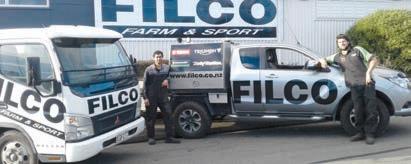








































TE NIWHA
Scientists are collecting environmental samples such as bird faeces in a research project aimed at understanding how and where avian influenza and other potentially devastating viruses could impact Aotearoa New Zealand as the highly infectious H5N1 spreads globally.
The Te Niwha research project is led by Univer-
sity of Otago Professor Jemma Geoghegan and Dr David Winter of the Institute of Environmental Science and Research (ESR) in a partnership approach with local communities and iwi. The research team will work to develop a portable in-field environmental DNA (eDNA) detection tool for bird flu and other viruses as part of an enhanced nationwide surveillance system.
News
Eloise Martyn eloise@topsouthmedia.co.nz
Advertising Sales
Danielle Brown danielle@topsouthmedia.co.nz
Summa Donald summa@nmf.co.nz
Steve Page steve@nmf.co.nz
Accounts Queries accounts@topsouthmedia.co.nz
The project is one of more than 70 research projects that will be funded by Te Niwha before mid-2025.
Te Niwha is a national infectious diseases platform established to improve preparedness for future pandemics, build and coordinate research capacity, and address serious infectious diseases.
Te Niwha is a response to the Ministry of Business, Innovation & Employment’s Strategic Science
Investment Funding Programmes (SSIF) call to develop an infectious diseases research platform.
In late 2023 Te Niwha scientists, produced ‘Likely Future Pandemic Agents and Scenarios: An Epidemiological and Public Health Framework’. The report was commissioned to support Te Manatū Hauora, the Public Health Agency, and partners involved in pandemic planning.
FROM PAGE 1
ELOISE MARTYN
“All things agriculture” is how Collingwood Area School year 13 student (final year of college)
Courtney Riordan describes her past few years of studying and learning.
“I grew up on a dairy farm and I enjoy and have a love for everything agriculture,” Courtney says.
Nowadays, Courtney’s family lives in Collingwood however they still have a strong connection, and involvement, with their family farm in Bainham, 15 minutes away.
For the past two years, Courtney has been studying all things agriculture via ‘Gateway’ and ‘Telford’, two learning platforms offered through Collingwood Area School.
“With Gateway I have been learning bookwork as well as practical hands-on experience at our local vet clinic.” Courtney explains.
“Telford is done by correspon-

dence and through them I have completed lots of different ag-related things.”
She also adds that one of the attractions with Telford is that you can do however much study you like, for as long or as little as you like, which gives much-needed flexibility.,
“My favourite part of Gateway has been learning to dehorn calves, there is a lot of bending over but it is fun,” she says smiling.
Recently, at Collingwood Area School’s prize giving, Federated Farmers Golden Bay presented Courtney with a Federated Farmers Trophy in recognition of her dedication and enthusiasm to the agricultural industry.
Next year Courtney has plans to head to Telford in Balclutha, Southern Institute of Technology, and complete a one-year course in Animal Technology on her first steps to entering the veterinary industry.
“I like getting out and working with or helping animals,” Courtney adds.



Recent Government immediate changes to the Accredited Employer Work Visa scheme have bamboozled famers and growers, as well as created more hurdles for those who are brining staff in from overseas. Changes include a shorter visa length of two years with a maximum continuous stay period of three years, and the introduction of a 12-month stand-down period at the end of the visa. Also new minimum requirements when it comes to skills, work experience, advertising roles, and engaging with Work and Income. Federated Farmers do not support many of these changes and have written to the Minister to raise our concerns and request an urgent meeting to discuss them. ‘We’re concerned that these sudden changes will put a number of farmers in a difficult and unforeseen situation where they are unable to fill roles this season. This is a significant issue. Staff shortages can have a huge impact on health and safety, mental wellbeing, and animal welfare,” Federated Farmers dairy industry chair Richard McIntyre explains, “There is also a risk that the standdown requirement will create a situation where skilled employees, who farmers have invested in, are picked up by other countries.”
Silver Fern Farms has reported a $24.4 million loss after tax for the 2023 financial year. They made a record profit in 2022 of $189.3 million. The 2023 loss has resulted in dividend being paid as well as adjusting the pace of its planned
investment and focused on reducing operating costs. CEO Dan Boulton said challenging market conditions are expected to persist well into the current year. Boulton said venison returns have been less impacted overall, thanks in part to increased investment in new market opportunities over the last few years.
Dog owners are being urged to make sure that their animals are up to date with flea and tick treatments in light of the tick-born parasite Babesia Gibsoni being found in two dogs in Canterbury. One dog was detected in March 2024 and further investigations revealed a second dog on the 10th of April. MPI is working to find out how the two dogs became infected with this parasite not previously found in New Zealand and to determine if there are other cases. In the meantime, dog owners should ensure flea and tick treatments are up to date and contact a Vet immediately if they come across any suspected cases. Symptoms include fever, weight loss, lethargy, and anaemia.
Avocado growers have had another disappointing 23/24 harvest with export sales volume the lowest they have been for the past ten years, and the low prices do not cover their costs. Less than 1.5 million trays were exported, compared to 5 million in previous seasons. The total harvest is forecast at 4.5 million trays, being only 60% of the 7-8 million-tray harvests of the previous four years. Domestic sales are around three million trays annually, worth about $50 million.
Residents from Aniseed Valley have come together to take action around the water quality and health of Roding River, which twists and turns through the length of Aniseed Valley.
By working together, groups achieve broader and more coordinated outcomes than working individually, Roding catchment group member Amy Robertson says.
“We received a great response from locals at our first meeting with more than 30 community members expressing interest in forming the catchment group,” Amy explains.
“Sarah Douglas asked for expression of interest for a leadership team and so far, Rosalie Bennet and I are keen.”
The group’s first few activities include seed collection and seedling repotting and it has already been supported by many willing community volunteers.
“We plan to connect with other residents and educate ourselves around all sorts of things like weed management, site preparation and native planting of the river edge and wider catchment; environmental plans for private
properties; wetland formation, and anything related to improving the catchment environment or preparing for the effects of climate change,” Amy says.
Annette Litherland, the Nelson/ Marlborough regional coordinator for NZ Landcare Trust, which empowers individuals and groups to act on improving their local land and water quality, says it would be great to hear from anyone keen to start a catchment group in the Waimea. The achievements of the neighbouring Moutere Catchment Group provide plenty of inspiration.
“The Moutere catchment group, as an example, has been run using an informal governance model. This could be replicated in the Waimea and takes the pressure off committing to additional work to start their own group,”
Annette says.
Over the last four years, the Moutere catchment has planted around 500,000 native plants involving 200 landowners. Roughly 330,000 of those plants were funded, with the landowner covering the remaining cost.
“Plenty of local support is available for people wanting to form catchment groups like Tasman Environmental Trust, Tasman
At the end of March, the Waimea Community Dam began releasing more water into the river in a drought that would have caused the river to go dry at the Appleby bridge and industries to scale back significantly without the dam. Prior to the dam releasing water for the first time in early March, water restrictions had been in

“The 2023/24 summer has been extremely dry, delays in dam commissioning meant water restrictions were in place for a few weeks which has impacted fruit size therefore production. Water release from the dam was very timely and prevented significant yield losses for the season. We are looking forward to the certainty of supply from the dam in the future.”

Bay Guardians, Tasman District Council and us here at NZ Landcare Trust, who have been working in this space for nearly 30 years,” Annette explains.
Tasman District Council catchment facilitator Brigid Graney says she is keen to engage and support catchment groups.
“It would be great to have more catchment groups in the Waimea
place since late December in anticipation of the forecast dry weather then in some areas ramped up to Phase E meaning water could only be used for essentials such as drinking, sanitation and stock. Top of the South Farming Paper asked a few Waimea locals what difference the dam had made for them and/or their business.
 Julian Raine Wai-West Horticulture
Julian Raine Wai-West Horticulture
“We have been able to maintain better than the minimum flow in the river which has had a positive effective on river health. The wide range of indoor and outdoor crops on the Waimea Plains have had no water restrictions once we started to release water from the dam, that’s 225 growers that without the dam during the recent dry spell would not have been in a position to produce quality products.”

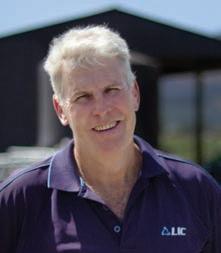 Murray King Chairman of Waimea Irrigators
Murray King Chairman of Waimea Irrigators
“We have been able to have above minimum flow in the river which we wouldn’t have had without the dam. Here on the farm with the recent drought we would have had a water cease take which makes very challenging farming. The recent drought was worse than in 2001 and back then the river dried up completely, I have no doubt without the dam we would have been in the same position this drought.”
catchment. Sometimes a catchment group may need to contact multiple council staff and my role is to help make those connections,” Brigid says.
Brigid also says that freshwater farm plans are a further measure to achieving successful catchment-wide outcomes and her team at Council is there to help make that space less complicat-

ed. Doing these plans as part of a catchment group can help with shared learning.
Something important, that everyone agrees on, is that the best results are improvements led by the community.
“It’s going to be a lot of fun and we will see what we can achieve,” Amy adds enthusiastically.


First-season results from a project demonstrating the biological control of two major greenhouse pests show greater suppression of pest population using natural predators than with a full chemical approach.
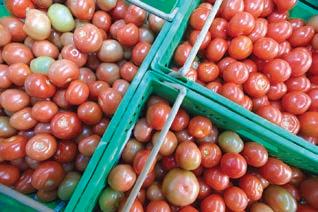
A Tomatoes New Zealand project in conjunction with a Lighter Touch is aiming to change the face of pest management of greenhouse tomatoes, moving the industry back to integrated pest management (IPM) centered on the biocontrol of insect pests.
The New Zealand native predatory mirid bug Engytatus nicotinae has been identified as having the potential to be a useful biological control agent (BCA) in the battle against Greenhouse whitefly (GHW)
and the Tomato-potato psyllid (TPP). Results from the project demonstrated that an entire season of GHW control can be achieved through the use of two BCAs, Encarsia formosa, and Engytatus nicotinae. While there were some GHW present, they were not at levels to economically impact upon crop production.
In terms of TPP, growers involved in the project have not had any significant issues with TPP. However, the project does not yet know if that is due to the beneficials or simply a lack of TPP pressure during the time of the trials, so work is ongoing. The project team has identified that as well as gaining an understanding of how beneficial insects work, it also needs to develop resources that explain what to do, and not to do, at a practical level.
The European Union Free Trade Agreement Legislation Amendment Bill received Royal Assent today, completing the process for New Zealand’s ratification of its free trade agreement with the European Union.
“I am pleased to announce that today, in a small ceremony at the Beehive, New Zealand notified the European Union of our ratification of the New Zealand European Union Free Trade Agreement (NZ-EUFTA). This enables the agreement to come into force earlier than expected, from 1 May 2024,” Trade and Agriculture Minister, Todd McClay says.
$187 million to our GDP once implemented.
“The EU is an important and like-minded international partner for New Zealand. This FTA provides a platform to further grow our trade relationship and deepen business connections,” Mr McClay says.

“For Kiwi fruit exporters Zespri estimates tariff removals will generate an average annual savings of up to $16,000 per kiwi fruit grower this year. While Onions New Zealand expect to see annual industry savings of $6.5 million.
“The Agreement also reduces regulatory barriers on service exports by 10 to 20 per cent, contributing an additional $95 to
Upon entry to force on 1 May, the Agreement is set to increase our total exports to the EU by $1.8 billion annually.
Benefits of the deal include: An annual boost to GDP of up to $1.4 billion and increase of exports to the EU by up to $1.8 billion per year by 2035.
Duties removed on 91% of New Zealand’s goods exports to the EU from entry into force, rising to 97% after seven years.
Tariff savings of $100 million per year on New Zealand exports to the EU from day. Significant new quota access for beef, sheep meat, butter and cheese – worth hundreds of millions of dollars per year, if filled.
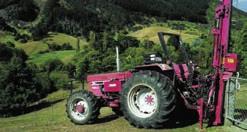
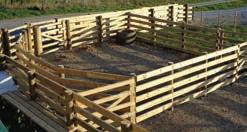


A state-of-the-art biomass plant, which will help reduce on-farm emissions by 98 per cent, was officially opened at Nelson growing operation, JS Ewers.
The new boiler, which runs on a wood residue sourced from local forests, will generate all the heating required for 12 hectares of glasshouse, which grow tomatoes, capsicums, and eggplant, eliminating the need for burning coal.
The project was supported with industrial co-funding from EECA (Energy Efficiency and Conservation Authority) and has been in the pipeline since 2017.
A staged approach included an earlier project to establish a large ring-main system, which is a network of large pipes carrying hot water throughout the site, along with a buffer tank used to store two million litres of water.
There was also the physical construction of the large boiler shed, the fuel storage and handling system, as well as the connection to the existing plant.
“Our decarbonisation strategy saw us adopt a number of initiatives over the
past seven years, with the completion of the biomass boiler the largest and most complex part of the plan,” says general manager JS Ewers, Pierre Gargiulo. “Feedback from EECA acknowledged the significant steps and investment made by our company. The long-term sustainability strategy was a key factor in securing a portion of co-funding for remaining projects.”
Pierre says like all businesses looking to transition to greener energy, investment needs to be balanced as there are always competing priorities.
“The EECA partnership has spanned the introduction of thermal screens in 2018, an Energy Transition Accelerator programme in 2020 that helped map a decarbonisation plan and provided the best pathway, the conversion of the smaller boilers to wood pellet and the eventual installation of the large biomass boiler.”
JS Ewers is a wholly owned subsidiary of Market Gardeners Limited, trading as the MG Group.
Chief executive Peter Hendry believes this is a “significant step” towards the co-operative’s sustainability ambitions.
The Alliance Group board has unanimously voted to appoint current director Mark Wynne to be the co-operative’s new chair, replacing Murray Taggart.
Murray Taggart has been clear this term is to be his last as a director. The Alliance board wishes to thank Murray for his long service to the co-operative and the significant contribution to ensuring that Alliance remains a strong farmer-owned co-operative and wish him well for the future.
all proteins in various markets, particularly lower cost Australian sheepmeat, and weakening global markets.

The Board remains committed to the co-operative’s long-term strategy, and in particular, the changes made across the business in response to the tough trading environment. These changes have highlighted significant opportunities for improvement.
Mark WynneLike all meat exporters, Alliance continues to face significant volatility as a result of geo-political tensions, inflationary pressures, high levels of inventory across
The global markets continue to be challenging; however, the new season has started on a much more positive note. But there is more work to do.
Mark is looking forward to seeing farmers over the coming months.
Full service facility for all makes of tractor, baler, mower etc...
Parts for all makes and models - All oils, lubricants, filters and wearing parts
BMTT FINANCE AVAILABLE ON ALL NEW AND USED TRACTORS AND EQUIPMENT







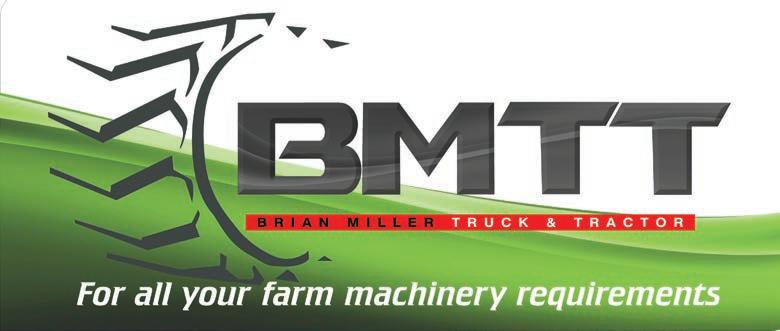


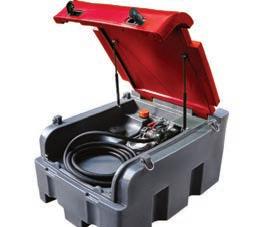
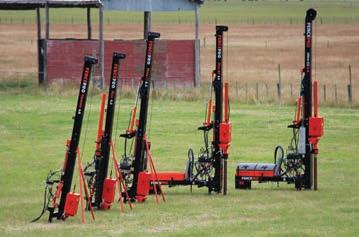


The logging industry is full of challenges as Hayden Barnes, Endurance Logging owner and operator, says ‘there’s always something.’
That ‘always something’ is the reason he named his operation Endurance.
“It’s not just a name, it’s a good way to sum up what logging is all about. You have to have a certain amount of endurance,” Hayden says.
Hayden must have a decent amount of endurance as he’s about to step into the 32nd year of his logging career.
Born in Invercargill and raised in Blenheim, Hayden says he’s always been keen on the outdoors and pig hunting which were attractions to the logging industry.
“I tried silviculture work for a bit, but it wasn’t for me. I then started the Richmond-based forestry Polytech course and thought this is what I want to do,” he explains.
“In the course, you spend time in a silviculture crew and then two logging crews. It was a great pathway to employment in the sector and it’s a shame it’s not still around,” Hayden
reflects. He says things have certainly changed during his time in the industry, but one thing that hasn’t changed is the like-minded people he enjoys working with.
“It’s the people that make it without a doubt. When you’re working in a team and it’s all flowing it’s like a game of rugby and having a win at the end,” Hayden smiles.
However, going from a forestry worker to running five crews, and employing around 50 loggers, hasn’t all been games of flowing rugby and Hayden is honest that it’s been challenging.
“It’s a big beast to run on my own, there’s a lot of pressure with the market and not knowing what it’s going to do,” Hayden says seriously.
Fortunately, Hayden and his team have successfully secured stable long-term corporate work.
“It was a real turning point to secure work from a corporate forestry company with a large estate which is much more resilient to the market, as opposed to private tree owners at the whim of the log prices,” he explains.
Regarding the beast he is run-
ning, he’s ready to take a back seat from the long days and the need to be available at all hours.
“I never had any preconceived ideas about running my own operation, someone offered me the opportunity years ago and I jumped at it. But maybe now it’s time for me to do the same as well as share the load,”
Hayden says.
Whilst sharing the load, in some shape or form, is on the horizon, Hayden says he still really enjoys being part of the industry and can’t see that changing any time soon.
A real highlight for Hayden is having his two sons, Logan and Kees, actively involved in the business. Logan, Hayden’s youngest son, is a crew manager for one of Hayden’s swing crews working in OneFortyOne’s estate, and Kees is a keen and capable logger.
“Both the boys are such good workers, it’s great to have them involved,” Hayden says.
“I’ve got a competitive nature which gives me a lot of drive when it comes to challenges. I enjoy being outdoors and working with great people and I’m looking forward to what the next chapter brings,” he says while smiling.


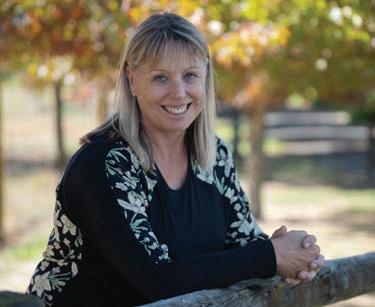
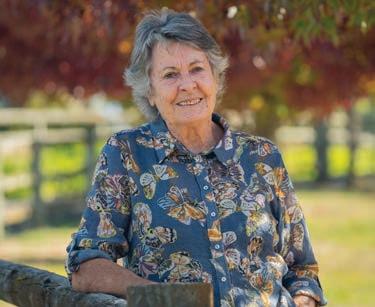

Bill McKinlay isn’t from around Motueka. He grew up in Trentham and spent much of his life in Otago but came to Tasman 10 years ago to be closer to his son and daughter-inlaw.
Bill used to grow vegetables, but then a few things happened to change his course. Hortons Nursery hosted an event several years ago that Bill attended. He needed a new hedge. And then along came covid.
“Being in isolation gave me a lot of time to potter around and come up with new ideas,” Bill says. Now four years on, Bill has a shade house and nursery containing 7,500 plants of nore than 20 species. He supplied 4,000 plants last year to local landowners wishing to plant natives on their land. Bill’s nursery is mainly set up to grow coloniser species –species that grow reasonably quickly in a new restoration area and create a
habitat for other trees.
The Dovedale Nursery is one of four community nurseries in the Motueka Catchment and Bill has hosted many events at the nursery with the community, including children from the local Dovedale School, with the help of his friend Debbie Win, Chair of the Motueka Catchment Collective Steering Group.
Bill is an experimenter. He’s not just happy to do the same old things. He’s always testing new ideas in the hope of getting stronger, faster plant growth and efficiency of restoration. He grows plants in different sorts of containers to test growing speed and plant health. He also grows a few plants to attract butterflies including a native tree nettle which is host to the red admiral butterfly. He makes ‘seed bombs’ using an old concrete mixer and builds wire cages for the root trainers, so they don’t have to be replaced so quickly. Some
things don’t work out. Some things do. The seeds Bill collects are from several areas around the catchment, but the majority are from nearby areas of bush including QEII covenants. This he does mostly in autumn when the seeds drop. Last year he reckons he collected and sowed 10 – 20,000 beech seeds, but most were infertile so only a dozen or so germinated – all part of the growing process.
Bill is part of the Biodiversity and Restoration Thematic Group of the Motueka Catchment Collective. This is made up of a core group of eight highly experienced, knowledgeable people in the area of restoration, biodiversity. The positive effects on the environmental health of the Motueka catchment from the successfully thriving Dovedale nursery can’t be underestimated. And it wouldn’t be possible if it wasn’t for Bill volunteering his land, time, and skills.




Septi-CureTM is:
Cost Effective Easy To use
Improves Soakage Reduces Solids and Scums Eliminates Nasty Odours
Reduces Costly Pump-outs
A satisfied customer in Hamilton has been using Septi-Cure™ for over five years. He says this allows them to have an odour free septic tank with low maintenance costs. He also says that his service person is amazed at how well Septi-Cure™ works, keeping their tank in very good condition.
*Results may vary









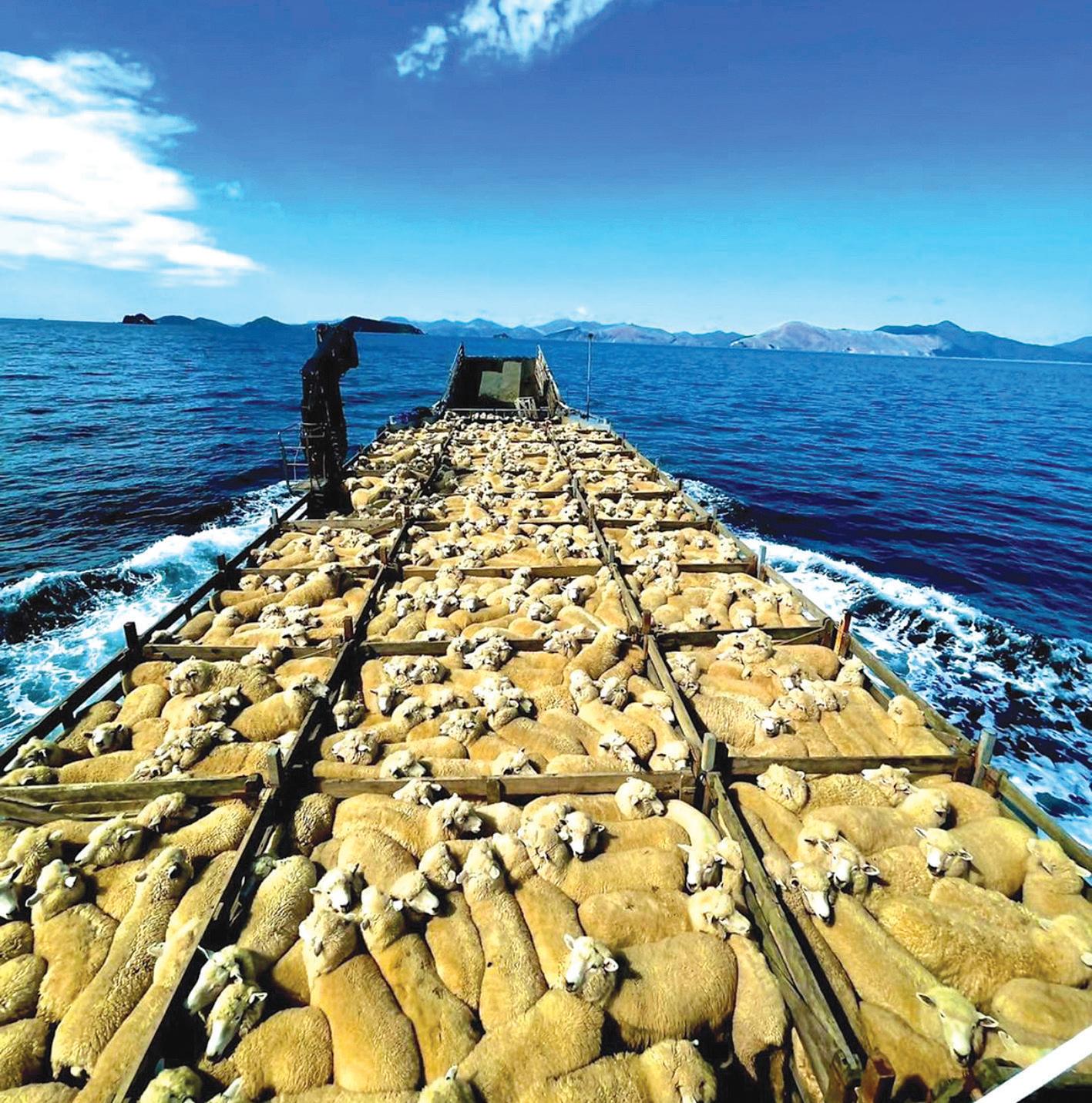
Rest easy with our budget-friendly Heat & Health Tag. The Tru-Test Active Tag system ensures accurate heat detection & health monitoring in dairy operations. Win a fence monitoring kit*

ELOISE MARTYN
Malbrough Sounds farmers, with water-only access to their farms and stations, have been using Johnsons Barge Service Ltd to transport their livestock for the past 120 years.
Twenty-Two months ago, damaging floods caused significant damage to roads in the area, increasing the barges demand.
“Some farmers, who previously used the road are now finding that transporting a whole barge load of livestock to be more efficient,” Johnsons Barge operations manager Jonny Everett says.
The barge can transport up to 1000 lambs in one go.
The quantity of livestock able to be transported on the barge varies depending on the breed and size
of the animal.

“The sheep are good at traveling on the barge, they settle down quickly and since there is only one layer, they keep cool and calm,” Jonny says.
There are usually three people aboard the barge when livestock are being transported. There are many jobs and maintenance to be done during a trip, as well as the important task of walking through the livestock every 15 minutes to check all are standing up and faring well.
“A trip from D’urville Island to Havelock takes between 4-6 hours depending on which site we are loading from, during this time we all work together to ensure the stock are traveling well,” Jonny adds.

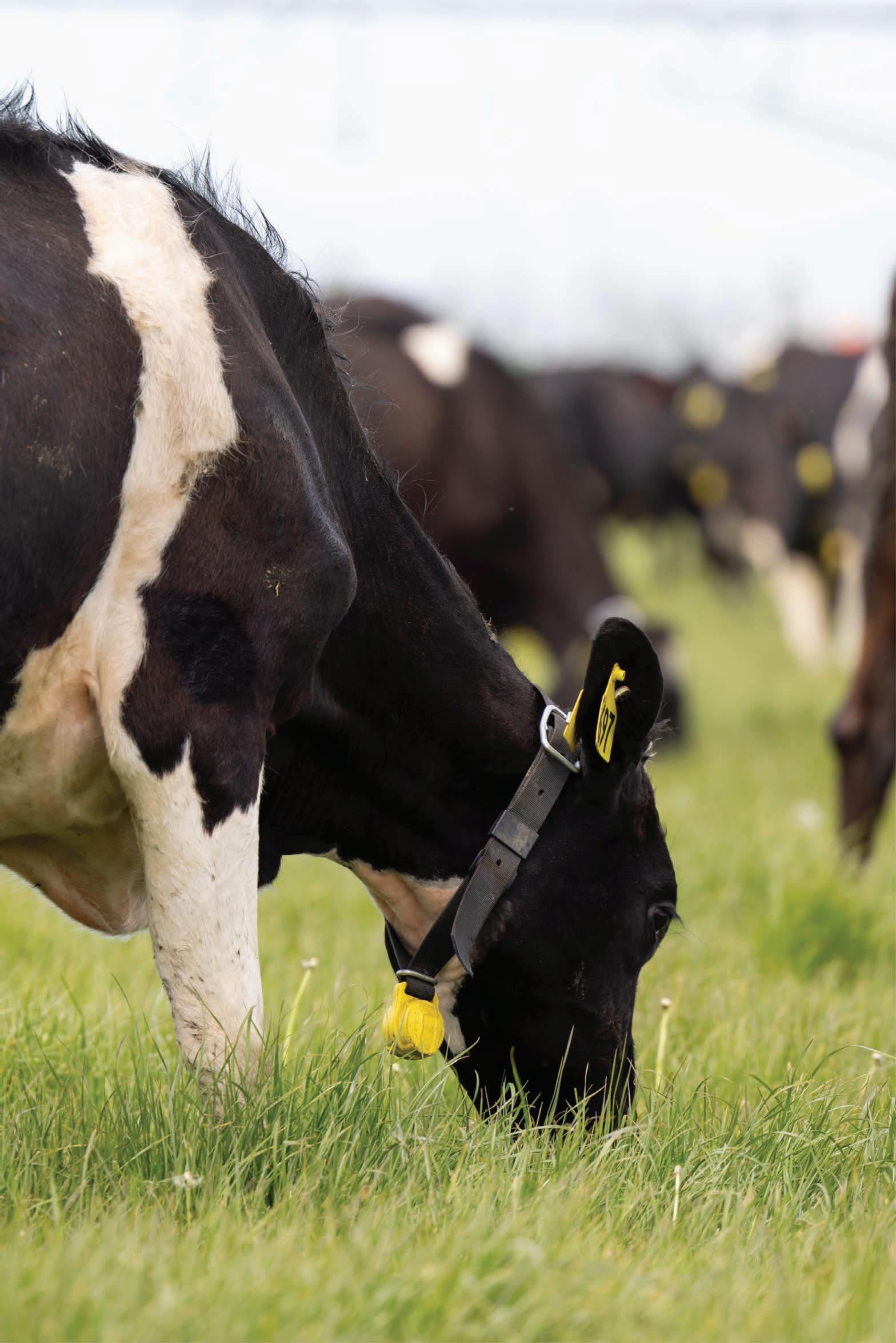





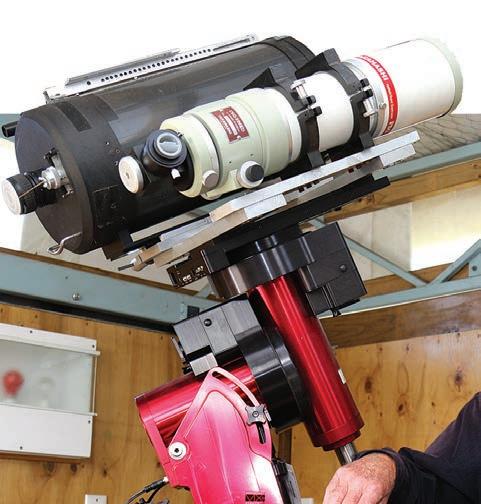
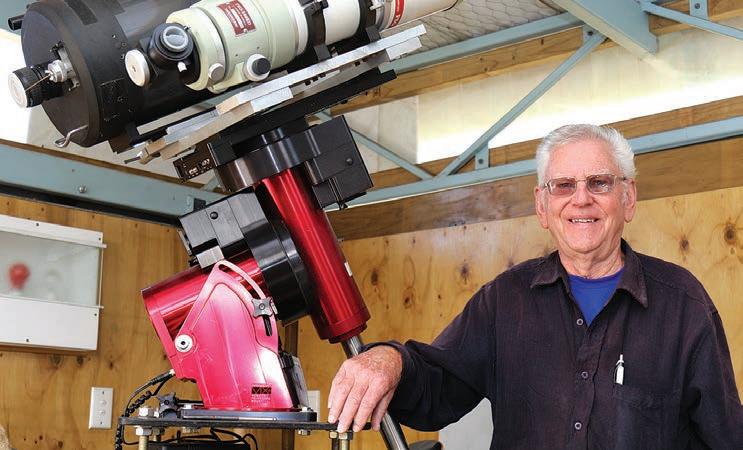







ELOISE MARTYN
Have you ever found an odd-coloured rock, or do you have a heavy chunk of something that your grandfather told you fell from the sky? If so, you could possibly have a sought-after piece of a meteorite that local and national astronomers and scientists are hunting for. A meteorite, a solid piece of debris from an object, such as a comet, asteroid, or meteoroid, that originates in outer space and survives its passage through the atmosphere, came through the roof of a house in Ellerslie back in 2004. It bounced off the couch, hit the ceiling and ended up on the carpet under the television. Apart from that, the Mokoia (Whanganui) meteorite which fell in 1908 is the only New Zealand meteorite to have been recovered soon after it fell. The other seven confirmed NZ meteorites were mostly found by farmers over the last 165 years – they are Wairarapa from 1863, Makarewa 1879, Morven 1925, View Hill 1953, Waingaromia 1970, Dunganville 1976 and Kimbolton 1976.
“We had a meteorite turn
up at our Golden Bay house,” says Wai-iti International Dark Sky Park member Ralph Bradley.
“There was a big hollow in the paddock so us kids had a dig and found an unusual rock covered in small holes and a bit burnt. I t was used as a door stopper. However, we left Golden Bay in the 1970s and I have no idea where it ended up, but looking back, it should have been tested.”
Ralph says that there must be a lot more out there and Fireballs Aotearoa says that there are quite possibly meteorites on backsteps propping the door open or sitting on mantelpieces. The stone that grandpa claimed was a meteorite, or that out-ofplace rock still sitting in the paddock.
Meteorites can tell us much about the formation of the solar system four and a half billion years ago.
“Meteorites provide us clues and help us find out more about the solar system and universe,” Ralph says. “Found meteorites can be tested which will tell us what it’s made of and possibly some clues as to where it’s come from, they are valuable to re-
search.”
Wai-iti International Dark Sky Park is supporting the Fireballs Aotearoa meteorite hunt and they have installed a dedicated ‘Fireballs’ camera on top of a house that faces South from Wai-iti.
“The camera takes night sky images every few seconds looking for bright streaks of light, shooting stars, as when a meteorite enters the atmosphere it creates light as it starts to burn before falling to the earth, or sea, and since they are burning, they land hot and hard,” Ralph explains.
With the idea being that if multiple cameras capture the same meteorite from different locations, they should be able to narrow down the geographical location of the fallen meteorite and go on a hunt for it.
Ralph also encourages those walking along riverbanks to keep an eye out for any, he says a meteorite will look a lot different from a normal rock and is often dark with a bit of a glossy or melted crust. If you believe you might have a meteorite, get in touch with Fireballs Aotearoa at meteorites@ rasnz.org.nz

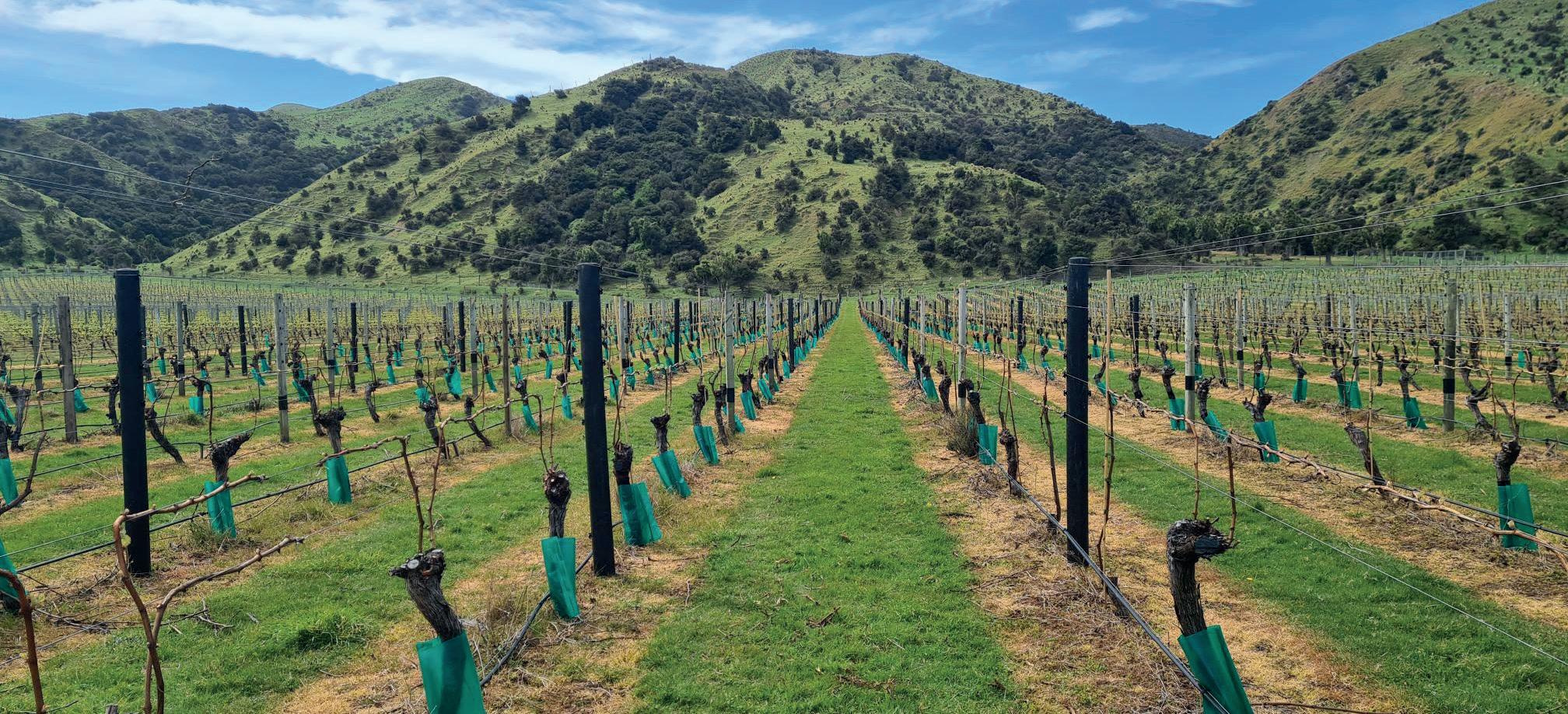

Will other protest group agendas smother Students Strike 4 Climate to ignore science, history and reality as they demand someone do something about its effects? They claim they will be most affected, but are they willing to accept their country on a war footing to both reduce emissions and adapt?
It is encouraging to see some at ANZAC service honouring those who died in wars for their current existence. They cannot even imagine the years of waiting for the dreaded telegram about a husband, son or brother amongst the 12,000 that would never return from WWII. Would they wait anxiously until they were 18 to join them as thousands did from 1939, to now defend their country in whatever form needed for a changing climate? Or be conscripted for that or forced into unpleasant work. They do not know NZ life back then. Do they appreciate our country facing survival then was as serious as young people now see climate change? Would
they accept an unsupported single-parent household as common, no social media or internet communications, no outside social life because of complete blackouts, and no concerts, discos or Netflix with musicians and actors away defending their country? No cheap imported clothing. No Maccas.
If NZ declared war, students would see similar effects on society, whole families, lives, and careers. School children writing in pencil on recycled paper to be rubbed out to write again, and teachers recycled from retirement to cope with their anxiety-disrupted lives. The car on blocks for the duration, tyres seldom available and petrol rationed to 1-2 gallons a month. Cycling as a necessity, not recreation, and limited electricity for power. Walking limited with shoes needing coupons as they were for all clothing and bedding with few imports; wool made uniforms.
Life during WWII was frugal. Weekly per person allowance of two ounces of butter was stretched by adding gelatine, one kg of meat was enough for
the occasional roast and fat saved to make soap, so mostly sausages, mince and offal. No lollies or sodas with sugar rationed to 12 ounces. Apart from that and other rationing that continued in one form or another until the early 1950s, there was no imported fruit. Vegetables were home-grown, composting was not a new fad, and six hens fed on food scraps avoided egg rationing. Would young people accept working the essential home vegetable garden and a restricted diet with no treats? Are they willing now to accept rationing of their personal GHG emissions as that war rationed life’s essentials? Ukraine anyone? Almost forgotten COVID restrictions would be a doddle.
Strident student claims are that someone else should do something to ensure their future. Are they now ready to accept similar or more severe demands on their own lives that much older people accepted so they could now exist to protest? What farmers are working with now? and the fact that everyone has to take action and contribute.
Autumn has been a pretty tough period with the harsh drought finally broken with the rains in early April. Whether that will be enough to give some winter growth for farmers remains to be seen but at least we are seeing some green.
A fantastic day held at the ‘Raidale Farm’ clearing sale of Owen and Lina Couper sums up all that is good about farming communities.
ing each other’s company was a great reason to be in the Rai Valley on the 23rd of April.
Our thanks go to our great vendors Owen and Lina who are the final chapter in the Couper farming lineage now they have sold which ends over 160 years of farming in the area. All the best for the next stage in your journey!
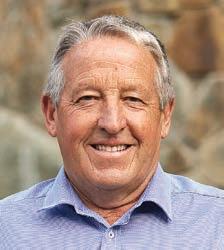
A great sale negotiated by PGGWRE agents Greg and Joe has seen new members to the Rai Valley community and the opportunity for the locals and those from further afield to get together for a massive clearing sale. A BBQ worked overtime producing sausages and burgers as friends and farmers haggled over what a box of bolts or a generator was worth amid the banter of our great auctioneers. Forget about the rural downturn for a while and enjoy-
As far as the government’s 100-day plan and subsequent quarterly updates
I am waiting to see any upswing in sentiment and returns for the rural sector. The groundwork is being laid but as we are an export-led economy a lot of what we do in NZ merely sets the groundwork for a recovery. I feel for all those going through restructuring and pain at present but I have faith that the issues we are dealing with will pass and we will be well set up for a recovery next season.
In the meantime stay safe, enjoy the rugby, league, or netball, and have a great month.











Blueprints for a thriving and resilient Tasman
Yellow bristle grass (YBG) is an unwanted grass that has established in many areas of the Tasman district. Although palatable to stock during spring, cattle will not graze YBG once it starts forming a seed head, (January – May).
The loss of grass production on dairy farms in the North Island due to the presence of YBG has been estimated at around 20%.
YBG is now so widespread along road verges in Tasman that it is only required to be controlled in Golden Bay and the Murchison / Nelson Lakes area, where it is likely to spread to beef and dairy farms.
The bristly seed head of YBG attaches readily to the hair of animals and can be moved between farms in feed such as hay. When purchasing hay, ensure that it does not come from YBG infested paddocks. Also, check and remove any
Shout

YBG plants you may find at your hay sheds. Roadside mowing is another seed movement pathway for YBG.
This is very difficult to manage effectively, as it is not practicable to clean mower components between all the various roadside YBG sites. YBG growing on the road verge can quickly spread to adjacent cultivated farmland, so being aware of the risk and identifying and controlling the grass when it is first noticed is important to prevent its establish-
A huge thank you to the Murchison and Maruia communities for the massive effort undertaken to remove baleage wrap and plastics caught in vegetation along the Maruia and Buller Rivers. Those involved in the clean-up included Wild Rivers Rafting, Ultimate Descents Aotearoa, Buller Canyon
Jet, Federated Farmers, NZ Kayak School, Fonterra, NZ Beef and Lamb, Westland Dairy, Nelson Canoe Club, local farmers and families.
This plastic waste entered the rivers during the 2022 floods and from an old rubbish dump opened up by the rivers, plastics
A dual achievement of ecological and cultural benefits for Tasman’s wetland areas has been realised with the recent commencement of our Wetland project at Mangatāwhai/ Black Valley, just north of St Arnaud.
The work took place over a two week period in March 2024. It involved earthworks to plug and fill the areas where the land had previously been drained to create productive land.
This work continued the efforts started by Department of Conser-
vation (DOC) around 15 years ago. Further enhancement was carried out through, weed control, fish recovery, sediment erosion control and 3284 plants are planned over the next two years.
Where the drains were difficult to access by the digger, a helicopter provided a practical alternative for depositing the soil.
Our partnership and connections with local iwi enabled some innovative approaches to the project – most notably through the use of harakeke geotextile baskets for

ment in pastureland. Herbicide spraying at the correct times of the year is the best option for control. Mowing contractors have also been instructed not to mow right up to fence lines, as a margin of long vegetation between the fence and the road can prevent an incursion of YBG into neighbouring farmland.
For further information, please contact the Biosecurity team at the Tasman District Council. biosecurity@tasman.govt.nz
2024 in the Council’s environmental planning space is set to be a transformational year.
Landscapes and coastal environment
The Tasman District boasts a remarkably diverse landscape, shaped by unique geological features and natural areas. Recognising and protecting these special areas will not only preserve Tasman’s distinct character, but also bring benefits to the community and future generations. It additionally ensures compliance with national environmental legislation.
Building on previous community consultation and the input from working groups, we are now drafting Plan Change 82 - Outstanding Natural Features and Landscapes, and Plan Change 83Coastal Environment and Coastal Natural Character, for formal notification and submissions later this year.
For more information on this work, including the scope for the plan changes, the change process, and the timeline, visit shape.tasman.govt.nz/landscapesand-coastal-projects.
were found tangled in trees, on rocks and in the sand on Westcoast beaches.
It is a timely reminder to farmers to ensure all baleage, used baleage wrap, rubbish pits and offal holes are located on high ground, well away from waterways and flood plains.
plugging old drains. These baskets reinforce the earth plug to ensure that it resists erosion – enabling plants to establish themselves and stabilise the plug. Using these bags not only supports Mātauranga but also reduces the number of helicopter trips required in future by using these baskets
The Mangatāwhai/ Black Valley project was made possible by the Ministry for the Environment’s Freshwater Improvement Fund with in-kind contributions from the Council.
Water Conservation Order
Making a difference for land and freshwater are future changes to the Tasman Resource Management Plan (TRMP) to implement the Te Waikoropupū Water Conservation Order in Tākaka.
We will also see measures to manage nitrates on the Waimea Plains, including updating the current plan provisions with the Waimea Dam coming online, as well as, reviewing current allocation/ abstraction impacts on some of the vulnerable deep Moutere aquifers. See updates on this work at tasman.govt. nz/takaka-WCO.
Natural hazards
Work starts to inform a future Natural Hazards plan change covering coastal hazards and sea level rise, flooding, wildfires, earthquake faults, liquefaction, and slope instability, to ensure that our communities are resilient to natural hazards and adapt to the effects of climate change.
See what we are doing with this work at tasman.govt.nz/natural-hazards.
For all things farming – go to Tasman Rural Hub www.tasman.govt.nz/tasman-rural-hub-2

EXCLUSIVE
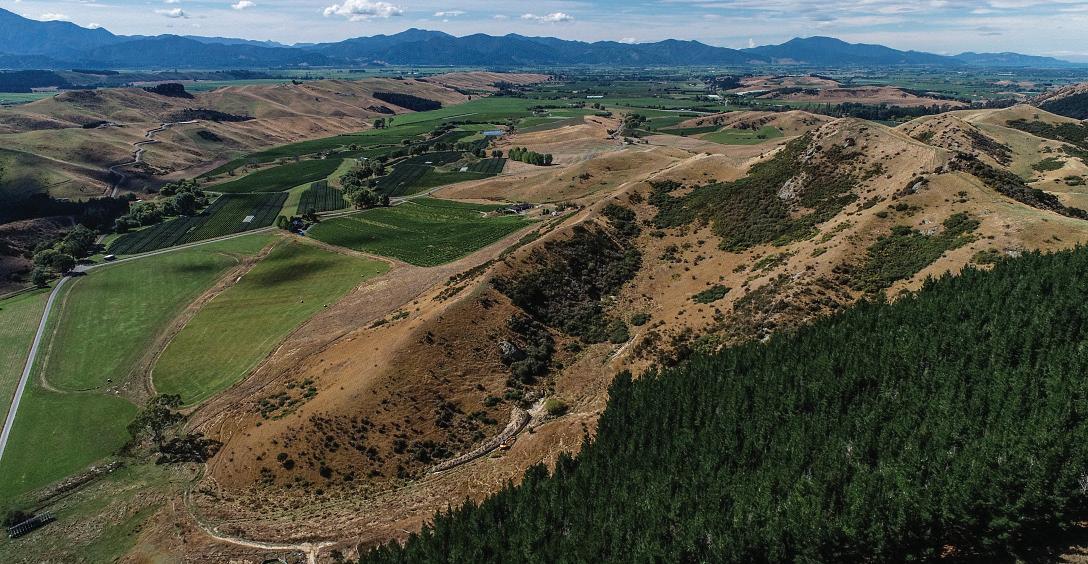

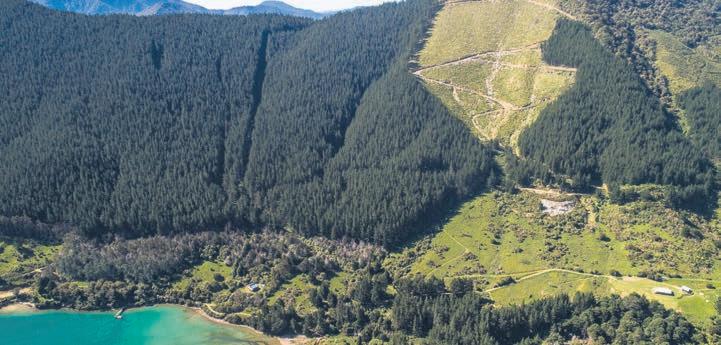


DEADLINE PRIVATE TREATY Plus
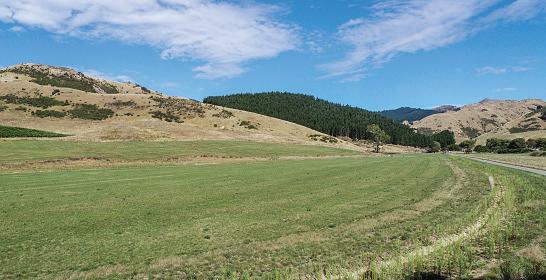
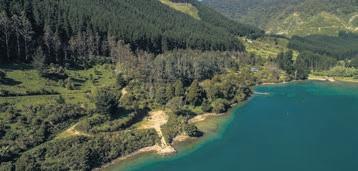
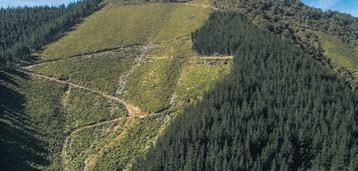
PELORUS SOUND Lot 6 Four Fathom Bay
RIVERLANDS State Highway 1 Hill Block with Consented Quarry
GST (if any) (Unless Sold Prior)
ENQUIRIES OVER $475,000 Plus GST (if any)
A great result for my out of town vendor on this unique Marlborough Hill block.
Closes 1.00pm, Thursday 29 February
With only limited purchasing options the benefit of 'outside the box' experience enabled this sale to proceed. All parties are thrilled with the outcome.
In the current real estate market we can still attract buyers to bare land and lifestyle blocks with good marketing and well-thoughtout strategies. Properties are still selling and our PGGWRE team has plenty of sales experience to guide you along the sales process and give you honest advice on the way through your campaign.
Not to be missed is this 80ha (197 acres) bare land block with a State Highway 1 frontage just South of Blenheim. Stunning views of Cloudy Bay can be accessed via the well-formed tracks that lead to the back of the property while close to the highway is a hidden but huge levelled building pad where you could build the shed of your dreams. Approximately 8ha has been levelled along the State Highway 1 frontage that could one day be planted in grapes. To add to the opportunity on this block, a large quarry exists on the southern boundary with a new resource consent to extract gravel until 2038. An additional benefit to an already attractive property.
pggwre.co.nz/BLE37582
pggwre.co.nz/BLE36757
EXCLUSIVE
VIEW By Appointment Only E
That is increasingly important in these subdued markets where some agents are just 'at you' to get a sale where we take a lot of time to ensure all options are explored and have the patience to work with vendors through the whole process.
If you want to add value to your land sale call Joe for a confidential discussion.
Secluded Lifestyle and Forest Welcome to Four Fathom Bay, the jewel of the Pelorus Sound bays. This unspoiled bay offers you your own slice of paradise with pristine waters, stunning coastal and sounds views, diverse wildlife, and a mix of native and exotic bush. All this without even mentioning the fishing!

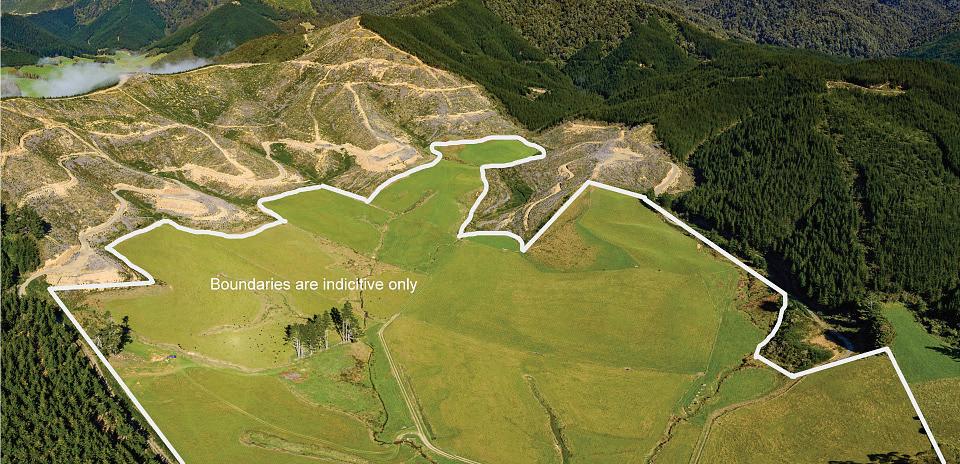
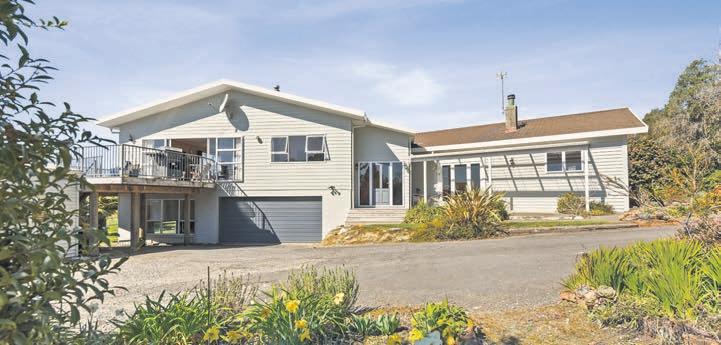
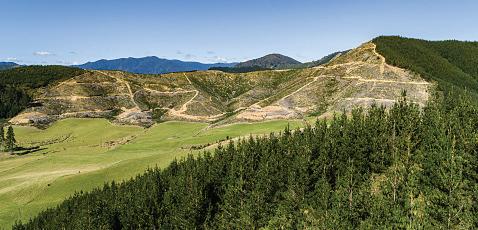

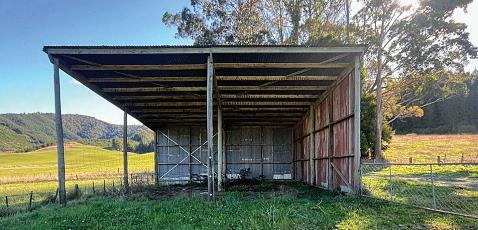
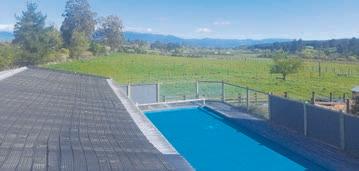
UPPER MOUTERE 225 George Harvey Road
Quality Lifestyle and Grazing Property
Proven Dairy Support and More....!
An opportunity presents itself to secure this 28.4340ha (70 acres) dairy support property in productive Rai Valley. Positioned in a pleasant private location just off SH 6 between Blenheim and Nelson. The Marlborough Sounds are also not far away. Renowned as a summer-safe area and an annual rainfall of over 2000mm this property is well laid out with 10 paddocks and a central laneway system. Currently used as a winter grazing option for young stock by a local dairy farm. In summer, supplements of hay and bailage are made from the fertile pasture. Quality infrastructure includes a good standard of fencing, cattle yards, load-out race, and a large twobay hay or implement shed. Grab the opportunity to secure this rarely available bare land property.
A rarity in the district, 22.4ha on two titles. A flat grazing block of 20.2ha with woolshed, tractor shed, hayshed, and stockyards and a second title of 2.24ha containing the house, pool, four car garaging plus workshop. A spacious 310sqm five-bedroom homestead is set in an elevated position overlooking the farm, facing north for all-day sun, with stunning views of the valley and Western ranges. A large deck and solar-heated pool provide for entertainment and relaxation. The property provides a wonderful opportunity for a family to enjoy the Moutere lifestyle and a property that offers grazing income and a variety of options for the future.
Our vendors will sell the 20.2ha bare block, with enquiries over $800,000.
pggwre.co.nz/NEL38263
pggwre.co.nz/BLE39550
VIEW By Appointment Only
Lot 6 stretches from north to south covering an approximate area of 47.41ha. The property sits on the north side and head of the bay with magnificent views scanning up and out of the bay. The property has an approximate MASL range of 10m to 200m. It has 14.6ha of pine replanted in 2019. It also has 11.2ha of regenerated trees, 11.2ha of clear land and the balance is of bush and scrub.
pggwre.co.nz/BLE38802
EXCLUSIVE
E jblakiston@pggwrightson.co.nz
E steve.crockett@pggwrightson.co.nz


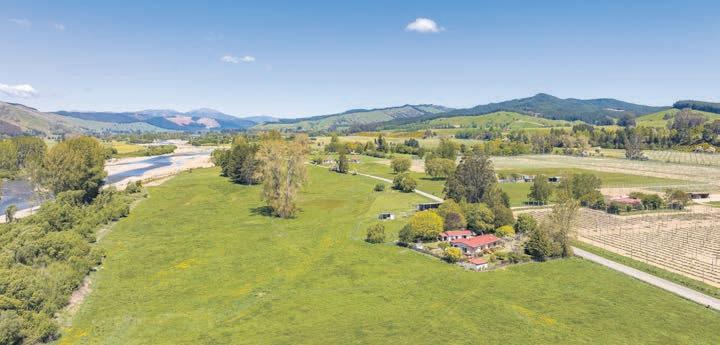


DEADLINE PRIVATE TREATY Plus GST (if any) (Unless Sold Prior) Closes 1.00pm, Thursday 16 th May
VIEW

TAPAWERA 368 Tapawera-Baton Road
Peaceful Country Living....!
Pelorus Sound Paradise


Easy comfortable living here on this 14.5ha lifestyle property. Approximately 4km from the Tapawera Village, this flat fertile grazing block runs along the edge of the Motueka River. The centrepiece is a fourbedroom home centrally placed and set amongst expansive lawns and established easy-care gardens. The living areas and deck face north for all-day sun.

Farm improvements include a three-bay implement shed, stables, and tack shed, plus excellent sheep and cattle yards. A bonus is an irrigation consent to irrigate the property. The Tapawera region is a growing destination with a mix of lifestyle properties, traditional farms, the expanding hop and apple industries, and a new motorsport park.
Our vendors are offering you your own slice of paradise with majestic views to the north and south of Pelorus Sound, as well as across into Nikau Bay. The property receives all day sunshine and overlooks amazing deep blue waters. This substantial land holding has an approximate area of 82.48 hectares of pristine native bush and sits just south of the entrance to Maori Bay. This is an impressively substantial property having numerous positions for a house site (subject to resource consent) along with numerous beaches and sheltered coves. The property would require a coastal permit for new owners to build a jetty or establish a mooring.

Recently, I had the privilege of speaking in Geneva as the Chair of the New Zealand Inter-Parliamentary Union delegation and I was immediately reminded of the impact of war and our need to constantly work towards preserving peace and democratic values. The 148th IPU Assembly was first established in 1889 to promote world peace and representative democracy and consists of 180 nations. Some of the member nations would struggle to meet the definition of representative democracy, but in my view, a forum of open dialogue is important, particularly in troubled times.

Hamish Murray with Stuart Smith at Bluff Station looking at regenerating native bush and the ETS. Photo: Supplied.
There were some tense moments at the assembly given that we had nations represented that are at war such as Ukraine and Russia; or in violent disputes such as Israel and Palestine, the Democratic Republic of Congo and Rwanda. That said most of the 1,500 attendees had an opportunity to speak in the General Debate and or in the Standing Committees that covered issues such as Lethal Autonomous Weapons, Renewable Energy and Human Rights. Unfortunately, the Assembly was unable to agree on a resolution regarding the release of the October 7th hostages and a cease-fire in Gaza which did not meet the two-thirds majority threshold. It was encouraging though, that as the Assembly drew to a close, the realisation that comprise was needed was gaining traction. Returning home, the need to constantly work to preserve peace and democratic values is still front of mind. Many in the world do not have the right to speak freely or the right to justice. Here in New Zealand, there are some who want to curb our right to speak freely, and they do this in the guise
of regulating so-called ‘hate speech’. To do so would be to start down the slippery slope to the loss of other rights and freedoms that we hold so dear in New Zealand.
Our government is committed to upholding the values of democracy and getting New Zealand back on track. Having delivered all 49 actions in our first 100 day action plan, we are now focused on three key areas: rebuilding the economy and easing the cost of living, restoring law and order, and delivering better public services. Before 30 June, we will deliver a budget that reduces wasteful spending while investing in frontline services, deliver tax relief to hardworking New Zealanders, launch an Attendance Action Plan to get kids back to school, and restore Three Strikes legislation to hold serious, repeat offenders to account.
We will also establish a Regional Infrastructure Fund to boost economic growth in our regions and importantly, reduce red tape and unnecessary bureaucracy wherever we can. It is only through a strong economy we can reduce the cost of living, lift incomes and afford the public services Kiwis deserve.
The coal extraction industries currently face significant barriers, and because we need coal mining to keep our economy there is an urgent need to align the consenting rules for coal extraction with those of other extraction activities.
Changes to the Resource Management Act expected to be introduced to Parliament next month will align coal mining to other types of mining, to reduce barriers which are holding back economic development. Inconsistent ‘red tape’ that does not recognise the fact that the impacts of coal extraction are similar, even the same as in the mining of other minerals, is destined to be removed.
The Government’s first Resource Management Amendment Bill will contain changes to provisions in the National Environmental Standards for Freshwater and the National Policy Statements for Freshwater Management and Indigenous Biodiversity. These apply extra controls on resource consent pathways for coal mining compared with other extractive activities even though the localised environmental effects are similar.
The additional controls, introduced by the previous government, which end the consenting pathway for

existing thermal coal mines from 31 December 2030, will also be removed. This position ensures New Zealand’s industrial processors will have access to domestic coal and not be forced to rely on imported coal to meet their needs.
A big ‘shout-out’ to the organisers of Agfest 2024 in Greymouth. Despite a few weather challenges, particularly on the first day, this was a very successful event. I enjoyed meeting lots of people from all over the South Island and I want to say ‘well done’ to the organisers, sponsors and all those people on the ground who made it happen.
I am pleased to report that the Weather-Affected Timber Recovery Bill will soon return to the Members’ Ballot at Parliament. If this Bill were to be selected and to be successful, a lot of good timber will be recovered, just like we were able to do after Cyclone Ita ten years ago. This Bill would give authority to the Conservation Director-Genera to approve any extraction with the obligation on the person to whom authority is granted to pay royalties, fees and charges as required. This would not be a ‘free-for-all’ – it would be commonsense legislation and the direct and spin-off economic benefits for the region would be very strong as this Government realises the need to do everything possible to rebuild the economy.





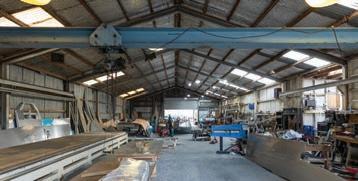
43 Johnstone Loop, Tasman
Looking for a versatile property investment? Look no further! This property offers various options: run your business from home, invest for rental income, or enjoy passive investment returns. With a 3-bedroom main home, a 1-bedroom sleepout, two 1-bedroom cottages, there’s ample rental potential. The main home features recent renovations, leaving room for customization. Plus, there’s a sunny deck and patio area amidst the gardens. The property also boasts established fruit trees, flower beds, and equestrian paddocks. Lease the pony paddocks for extra income or future development. The workshops, totalling approximately 640sqm, are in high demand and come with additional storage options. Conveniently located between Motueka, Mapua and Richmond, this property is a Tasman gem.
Tender Closing 22nd May 2024, 1PM (No Prior Sale)




223 Redwood Valley Road
Sometimes getting the offer is the easy part - it’s what goes on behind the scenes to get the deal across the line that really counts. Looking for strong negotiators who go above and beyond? Give us a call today to see how we can help you achieve your SOLD sign.
• Over 50,000 online impressions, with a further 21,866 views online.
• Over 23 interested parties.
• 4 week Tender campaign with multiple offers.
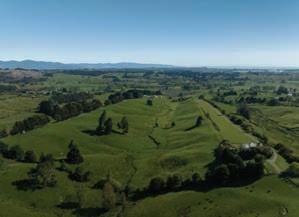


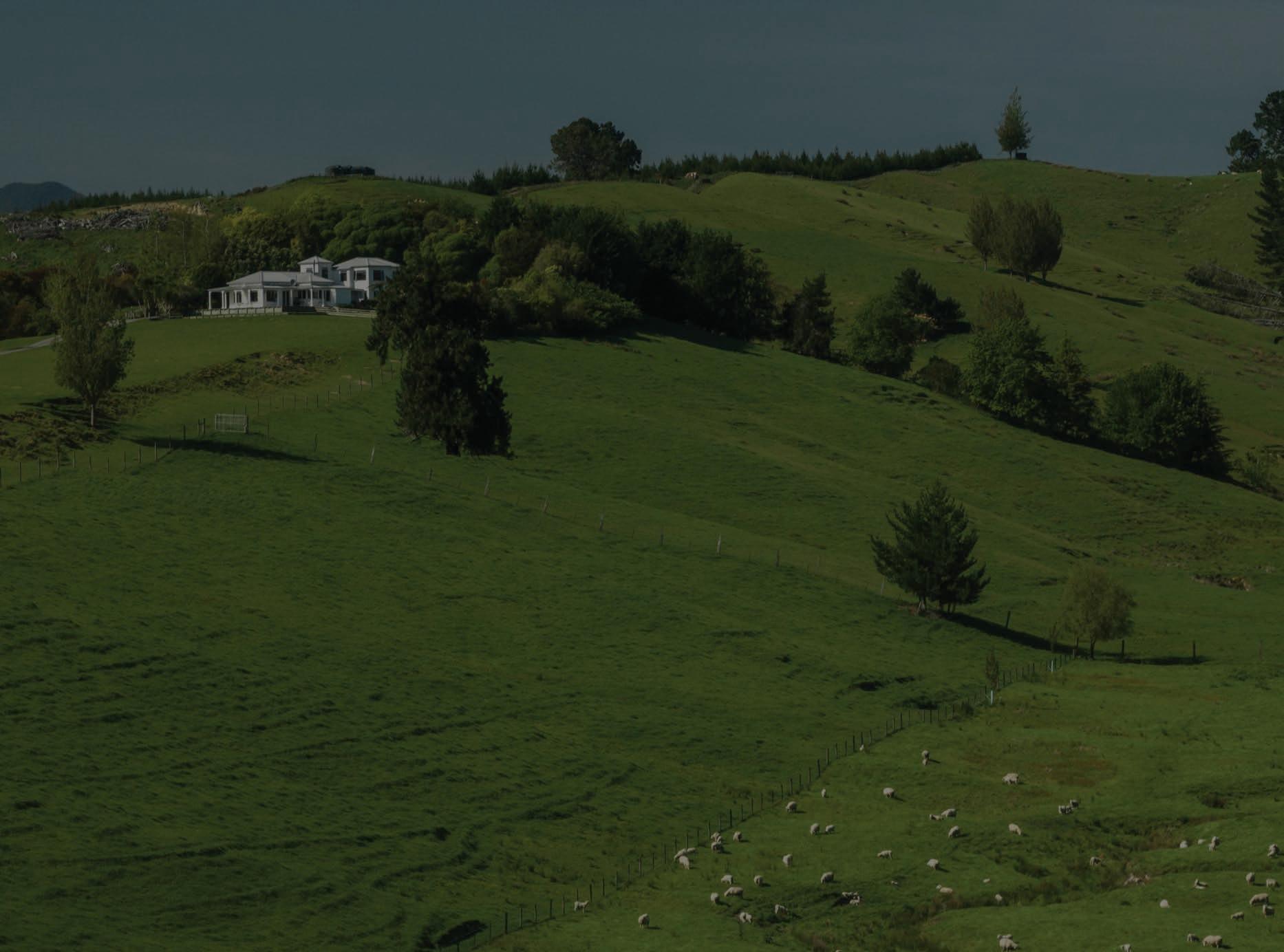
Lot 4 and Lot 5,242 Teapot Valley Road, Brightwater
Rarely do opportunities like this arise-yet we have two blocks for sale in a fantastic location. Both offer privacy, space, passive income, grazing land, and a blank canvas for your dream home.
Lot 5 - 155.Ha approx including 119.5 Ha of Pinus radiata, 10 Ha of grazing land, and an established building site. Features a 5-bay shed with solar system and well-sourced water.
Lot 4 - 50 Ha approx. with 33. 7 Ha of Pinus radiata, 12 Ha of grazing land, and an elevated building site with expansive views. Water from a well on-site.
Both blocks have great access throughout and are well-tracked for horse riding, walking, and or hunting. A Country Cottage (Lot 3) is also available.
Located in Teapot Valley, close to Brightwater and Richmond's amenities. Act quickly for further information or private inspections before they're sold.
$2,500,000 & $1,200,000 Plus GST {if any)

Lot 3,242 Teapot Valley Road, Brightwater
Nestled among lush gardens and trees, lies this charming, extensively renovated cottage, perched on an elevated, sunny 1 Ha approx. site. Step inside to an inviting open-plan kitchen and lounge, marrying modern comforts with rustic allure. The kitchen features a stylish country design and a practical timber breakfast bar. In winter, cozy up by the crackling log burner, enjoying scenic rural views. Come summer, bi-folding doors lead to a covered veranda, blurring indoor-outdoor boundaries. Three spacious double bedrooms, a tastefully renovated bathroom, and separate toilet await. Say goodbye to electricity bills with a cutting-edge solar system and backup generator, enabling off-grid living. A large implement shed with solar equipment and water pump completes the picture. Tucked away in Teapot Valley, yet close to Brightwater and Richmond, enjoy rural tranquility with urban conveniences. Contact us now before it's gone! Negotiation over $1,190,000

Did you know the bright yellow flowers of gorse can be used to add colour to a salad? They add taste with an “aromatic coconut flavour” writes author Peter Langlands in his recently published book “Foraging”. Similarly fresh red clover flowers can be added to salads and “the dried flowers make good herbal teas” while the “fresh spring growth can be eaten raw in salad, the older foliage steamed and eaten as a vegetable.”
Author Peter Langland’s says with introduced species added to native plants, there’s over 7,500 edible species to consider but for practical reasons he’s chosen 250 main species, “selected for their flavour, generally recognised as safe to eat and for being readily available.”
Safety is paramount in foraging from the wild and the book stresses the need for caution and readers are urged to “be vigilant about potential toxins, environmental contaminants and proper food preparation techniques to minimise risks.”
With a lifelong interest in the outdoors enhanced by a Canterbury University natural sciences degree, Peter Langland’s and Penguin Books stylish book design have produced an intriguing volume. Contains a wealth of valuable information about the individual plants tooboth native and introduced.


Nelson Marlborough
Fish & Game
It’s hard to believe 12 months have passed since the last Opening Day of the game bird season.
Opening Day, which many game bird hunters describe as “Christmas for grown-ups” is here, and while many hunters look forward to the sound of whistling wings and the smell of freshly burned powder, Opening Day is about more than that. It’s about connecting with family and friends, getting into the great outdoors, sharing a laugh and a meal, and generally forgetting about everyday life. In the hectic pace of life in which most people live today, any pursuit or hobby which requires you to get totally in the moment and focus, even for a time, on nothing but the reason for being there, is great
for the soul. That’s why we also encourage hunters to head out regularly during the season. Even a short evening hunt after work to your nearest hunting locale is a chance to immerse yourself in nature and quickly push the reset button. There’s a high probability that there will be a handy spot close to where you live which doesn’t take a whole lot of time to get to. You can keep it simple too, a couple of decoys, your caller, and a few shells and you’re good to go. To be hunting in the twilight of the day, in those magic minutes when nature seems to come to life, will always be worth the trip, no matter the number of ducks on the board.
While most of us are happy for a few hours fishing or hunting on our own, spending the occasion with a mate is even better.
At the very least you’ll have the chance to catch up and share a few laughs – this alone is a
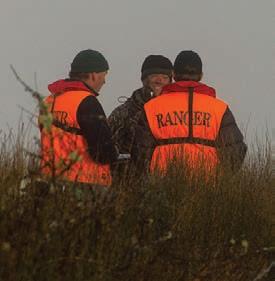
good tonic. There is a saying that it takes a hunter to make a hunter, and for the parents among us, this is prime time to be with your kids, a chance to invest your knowledge and hunting ethos into your child. As Fish & Game staff, we are all passionate bird hunters and would love to be hunting ourselves on Opening Day. Instead, we will be out in the re-
gion undertaking compliance, which provides a great opportunity to meet with hunters and share a small part of the day with them. We are lucky to generally have great compliance in this area, and on Opening Day in Nelson Marlborough and the West Coast regions, we will be ranging with the NZ Police who will assist us in checking compliance with the Arms Act, making sure hunters are adhering to the new rules about transporting firearms, they are hunting safely and leaving the beers until the guns are locked away.
Opening Day is an iconic occasion in the Kiwi calendar. A day where tradition comes to the fore, a day that is etched in nostalgia as people connect, memories of old are re-lived, and new ones are made. For all those heading out, we hope that your aim is true, and wish you good times with great friends.
TONY ORMAN
“Agriculture still remains significant in the research work at the Marlborough Research Centre in Blenheim,” Marlborough Research Centre’s chief executive officer Gerald Hope said at the recent monthly meeting of Marlborough Federated Farmers.
“The Marlborough Research Centre is there for you. Agriculture still remains significant
at 30 per cent of the centre’s work, despite extensive land use changes,” he said. “The centre is now in its 40th year. We’ve survived.”
It was back in the early 1980s that a primary production study identified the need for a locally-based research centre and in 1984 the government backed the concept. The proposal outlined further details ‘a research centre to undertake primary production research
List PM Labour

While the rain over the last week is very welcome it’s been a very dry period for the top of the south and many farm livestock. Farmers have been feeding out valuable winter baleage and hay to keep their animals in condition. While there have always been periods of dry in the past the frequency and the changes to climate patterns mean that it will be harder for farmers to plan ahead with any certainty. This uncertainty creates additional costs across the farming system and without additional returns for meat wool and dairy, livestock farming will come under increasing pressure into the future. Our last Labour government was blamed unfairly for a lot of
the costs. The truth and reality is that international inflation, uncertainty around weather with the ongoing expected upward movement of land values and finance costs has made life on the farm so much harder. The only way to ensure that young people can be attracted and retained in our agricultural systems is to give them a realistic hope of a fair return for their efforts.
The valuable market in China which has supported our country since Labour signed the trade agreement in 2008 has assisted us through some challenging periods including the global financial crisis and Covid. However, our overreliance on large volumes and value from this market means we are hugely exposed to volume and price volatility such as has happened more recent-
for the Marlborough region.
The initial work was to cover pasture, arable crops and horticulture with possible expansion to cover marine and forestry research and with botanical and ecological work also envisaged.
DSIR, MAF and the Marlborough United Council contributed $100,000 each towards an annual running cost of $300,000 at 1983 values.
Today the Marlborough District Council provides a major
ly for dairy prices. Valuable market opportunities into our traditional markets in the UK and EU will depend upon us meeting higher levels and standards for many areas such as animal welfare, food safety, environmental management and labour. These opportunities and challenges have been spoken off for some years but in recent times the incoming coalition government seems blind to the realities of the importance of New Zealand’s international reputation The so-called soft power influence that we have in our markets can be quickly undermined by perception that New Zealand is stepping back from these hard won high standards Recent changes by the National led coalition government including the stupid step back in smoking regulations has put
part of the income with tenants such as the Ministry of Fisheries, providing the rest. “In total we’re only a million-dollar operation with currently $2.8 million of borrowings,” said Gerald Hope. Farmers are seen in a positive light by the Marlborough Research Centre. “Farmers are not the problem, but the key to change,” he said. “The door’s always open,” he said, “It always has been for research projects.”
New Zealand’s reputation in the minds of many high value customers at risk. Farmers who think they are immune from these wider social and reputational issues may find the challenge of attracting and retaining young people into agriculture harder than it has been in the past. I have said many of these things before as Minister and I will continue to repeat them because the risk of getting it wrong for our small nation of 5 million people is huge and our hard-won reputation and relevance in the international marketplace can be easily lost. The National lead backtrack government is not serving the interests of future generations well with many of the changes it has brought into legislation, and they continue at our collective peril.
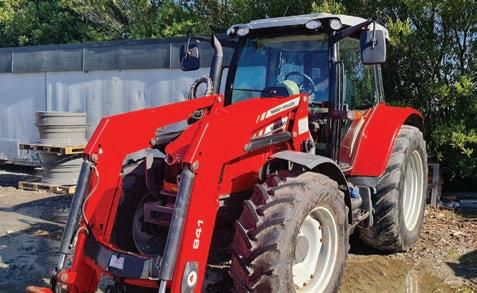


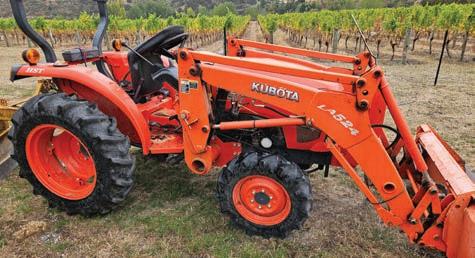
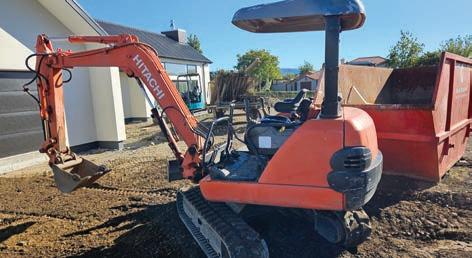

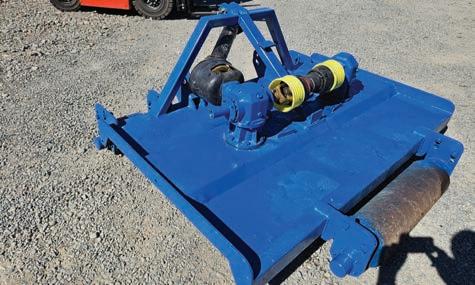


Celli Pioneer 140 spike rotor original spikes excellent condition $14,000
• Ford New Holland 7840 SLE and Pearson loader - $17,500
• Iseki 6500 and loader - $12,500
• Massey Ferguson 245 power steering good rubber. Tidy order. New seat and serviced - $10,500
• Daedong DK80 cab and loader low hours and tidy tractor great buy$19,500
• Welger B435 Master Baler, farmer owned - $25,000
• Bucktown 1.8m h d mulcher hy side shift like new good hammer flails - $6,750
• Vicon PZ 360 haybob late model in very good order - $4,750
• Small 1.5 slasher - $1,600
• Giltrap 3pl log splitter - $2,250
• Heavy duty 7ft back blade hy rams to angle and tilt - $6,500
• Austin 3m HD cambridge roller
• Excellent condition - $4,950
• Vineyard Sweepers 3 to choose from
• Hustler front fork lift suit 135 MF$2,000
• Trimax 1.8 Vineyard Mower, tidy order - $3,000
• Dual wheels Snap/locks 38” 36” 34” 30” from - $2,200
• Fieldmaster 275 topping mower, all serviced, good condition$4,950
• Silvan 600l herbicide sprayer electric controls - $5,000
• Celli Tiger 190 Rotary hoe new blade 3m wide cage roller - $9,500
• Kvernland TLA 6 metre cultivator crumbler - $8,500
• Silvan 600L sprayer PTO shaft plus reel & gun - $2,500
• Mole plough good order - $1,850
• Rata pallet fork euro hitch - $1,250
• 9ft cambridge roller, very good order - $2,800
• Yeoman chisle plough 9 tyne$2,200
• 2m cultivator - 2 to choose from
• Used cambridge roller rings
• Berti 1.6 mulcher very good order - $6,750
• Berti 1.6 picker mulcher - $5,500
• Howard AR 70 rotary hoe - $3,500
• Ero Roller plucker on power pack all serviced good order - $12,000
• Howard AR 80” rotary hoecoming in
• Duncan 633 Culivator Crumbler$5,000
• 2000l trailing overow herbicde sprayer hy fold , fully serviced complete with autorate controller - $6,500
• 3 metre leveling bar 3pl - $2,200
• Vicon 302 spreader like new$2,400
• Brevigleri 1 8 mulcher runs up well - $3,500

KEN STRUGNELL
I’ve driven and owned most Land Rover products, Range Rover’s, Discovery’s, a Series 2a and currently sitting in a shed at home doing nothing, a 20-year-old diesel Freelander. My favourite, and probably if I still had it, is the ’68.
The latest Defender is a direct descendant of my humble 60’s model and back to the 40’s Series 1 that could be repaired with a couple of spanners and screwdrivers. I could remove the roof, the doors, even the front windscreen and fix most problems. The 2024 Defender has none of those ‘qualities’ yet the Alpine rear windows do link it back to that early design. What also links it is price, as almost all models start north of $100k, around the price now of a good Series model!

With a wading depth of 900 mm thanks to the standard snorkel, the Land Rover Defender easily manages 300mm. Photo: Ken Strugnell.
The Defender though has moved into the SUV only sector with comfort, convenience, power, performance and technology. It can be had in petrol or diesel 4-cylinder, 6 cylinder and V8 in natural or forced induction. There are also Hybrid options available in most guises. And there are three body sizes, 90. 110. 130. I drove the turbo straight 6, 3 litre 110 Hybrid. Like Disco and RR, the Defender is quiet, effortless to drive, filled with screens that can provide every skerrick of information the techno geek might like... but lacks character, that indefinable feeling Land Rover owners know so well.
For all that it’s quick off the mark, very stable on- and off-road, tows 3500kgs and is relatively economical. If you have an hour to spend, look up the official NZ JLR website for all the possible permutations.
Did I like it? Well, it’s subjective, but yes I did, for if I was to reject change and hark back to the ‘good old days’ I’d still be writing this in pencil for the typist at work to transcribe to paper!
No, there are no Flat Deck options, nor are there any fire engine conversions, so popular with the rural community. However, if you’re taking the kids back to school after the holidays to Christ’s’ or Rangi Ruru in Christchurch, the drive will be sublime!
Yes, you can drive it, as I did off -road or ford 900mm [almost three feet] and arrive in style, as indeed you can with a Ford Ranger and its ilk. But well, that’s not the point. You’ll buy a Defender because you want a luxury 4WD that can be driven on the blacktop or the mud on the dairy farm or across smaller rivers with ease. You’ll buy it from brand loyalty. You’ll buy it too because it is still a Land Rover and in the end that’s all that matters!








Motor Industry Association
Chief Executive Aimee Wiley says that continued soft demand in March is attributable to the wider economic slowdown New Zealand is currently facing. Higher interest rates to combat inflation have also dampened consumer spending considerably.
11,616 registrations in March 2024 are 27.4% lower than March 2023 (4,381 units) and 44.7% lower than March 2022 (9,388 units). On a year-todate basis, 2024 is 10.8% lower than 2023 (4,091 units), 27.8% lower than 2022 (13,056 units) and 23.4% lower than 2021 (7,951 units).
New Vehicle Industry Key points
• Top three overall market leaders in March 2024 are: Toyota with 20.6% market share (2,391 units), followed by Mitsubishi with 12.8% (1,489 units) and Ford with 12.1% (1,410 units).
• March registrations breakdown: Light Passenger 7,571, Light Commercial 3,373 and Heavy Commercial at 672.
• Total Industry by motive power for the month of March: 521 BEVs (4.5% share), 226 PHEVs (1.9% share), 2,577 Hybrids (22.2% share) and 8,292 ICE vehicles (71.4% share).
• The overall top three segments in March were Pick Up/ Chassis Cab (25.4%), followed by SUV Medium (22.8%) and SUV Compact (22.1%).
Trucks waiting for ferries may have an alternative to parking on Picton streets if a facility in Waitohi Domain is built.
Money has been set aside in Marlborough District Council’s LongTerm Plan to terminate Port Marlborough’s lease of the domain and use it for parking complete with a new ablutions block.
After the Kaikōura earthquake, when SH1 was closed, Council obtained partial funding from the government to build a temporary truck park on Waitohi Domain, which catered for up to 26 truck and trailer units. Once the highway reopened, the land was leased to Port Marlborough.
Since then, there have been increasing issues with trucks parking on Picton streets with Council receiving complaints from residents regarding noise at night from refrigerated trucks and safety concerns. Council surveys




have found more than 50 trucks and trailer units parked in Picton streets when ferries are delayed. While the Riverlands Truck Stop near Blenheim provided toilets, showers, a laundry and a place to have a meal, a similar facility was needed closer to the ferry terminal.
An ablutions block with a swipe card system, similar to that used at Riverlands, could be installed with an estimated cost of $400,000. The cost of terminating the lease with Port Marlborough is $209,500.


Farmers are spoilt for fertiliser product choice and fertiliser being often the second largest expense deserves special attention.
Farmer owned co-ops are superphosphate manufacturers with their other two products being muriate of potash and urea. Magnesium is the element we’ve focussed on, and dolomite is the only magnesium product we’ve recommended because of its unique benefits.
Although most soils contain sufficient magnesium to meet plant demand animals benefit from extra.
Dairy cows close to calving require more magnesium to avoid unwanted metabolic disorders. Even when there are few animals that require individual attention there is nearly always a production response from dolomite applied in autumn. Although providing outstanding animal health benefits its use has often been discouraged because
of its higher cost per kg of magnesium, which is no longer the case. Dolomite can provide magnesium at a significantly lower price than magnesium oxide products. A single application of autumn dolomite provides excellent protection throughout winter and spring, for animals fully fed on the pasture to which it has been applied. The requirement for extra magnesium via in-line dispensers is markedly reduced.
Unlike more soluble products dolomite doesn’t leach releasing magnesium for plant uptake steadily over a twelvemonth period. Levels in pasture plants to which it has been applied are typically between 0.22% and O.25%, sufficient to meet daily requirements.
Emeritus Professor of Soil Science Tom Walker wrote in his article, Dolomite a first-class source of magnesium, “…. If my diet were deficient…. I would rather correct it by daily increments….”
Magnesium deficiencies in spring are seldom, if ever, solely a lack of mag-
nesium. Calcium is always involved as prior to calving extra magnesium is necessary to help release calcium from the frame of the animal. Post calving demand is primarily calcium, dairy cows and other lactating animals have an inbuilt sense of what is required. Having dolomite and lime flour available to stock at all times is an excellent start to understanding the change that takes place around calving time. Where this has been implemented a rapid shift in demand for lime flour has been observed after calving. Moving from a daily drenching/ in-line dispenser regime to a free access one should be done over a period ensuring an uninterrupted supply of dry dolomite and lime flour.
Under pinning the success of this supplementation programme starts with an autumn/winter application of dolomite at a rate of 220kg/ha which supplies 25kg of magnesium per hectare.
Phone for a delivered price 0800 436 566.
It is very interesting that the food we consume now is all about convenience; growing enough food to feed the hungry world population.
But growing food is not just about producing quantities of food but it should also be about producing healthy food - food that will grow a healthy population. Hippocrates once said –“Our food should be our medicine and our medicine should be our food”.
This is just as true today as it was all those years ago. Yet, statistics show that the nutritional value of our everyday food has dropped significantly since the 1950’s. One only needs to google this to get the facts. This leads us to eat more to get the required amount of nutrients to satisfy what we require to be healthy.
Besides all this, our food will probably have a range of other toxins that will not be healthy for a thriving population. Again, for more information look at google, for example herbicides and food.
Now back to growing healthy pasture and crops for animal or human consumption. Is there a way to reverse the trend and grow a more nutrient dense crop, either for ourselves or for our animals? The short answer is yes, we can, but we will not find the answer anywhere near the established farming practices. So, what to do?
It all starts in the soil which is the power house to everything that appears above the ground. The roots are in the soil/connected to the soil and fed by the soil. So, starting with the soil makes a lot of sense. Soil should hold the same number of livestock
in it as there are animals above the soil. In other words, there must be several tonnes of earthworms, microbes and fungi in the soil to be alive. These creatures are doing a range of amazing activities. They aerate the soil, making it porous so that moisture can penetrate deep into the soil for lasting water for the plants. Better still, is to have a really good amount of carbon built up in the soil. This will act as a reservoir for water and hold hundreds of liters for future use.
Then there is the root system which people seldom look at. This not only holds the plant in the ground but also sends out feeding roots that find the nourishment that the plant needs to thrive. Aside from the roots, there should also be fungi that are quite clever in searching out the exact nutrients that the plant needs to grow at optimum levels. Also, there is the plant that either feeds us or feeds the animals that ultimately feed us. Here again we can look after the plant by feeding it a foliar fertilizer that will bring the plant back to where it should be – full of nutrients as it once was. This means we need to use a variety of methods to create the very best environment. So that what the animals eat is nutritious and will ultimately produce food that is beneficial and healthy for all. For more information call

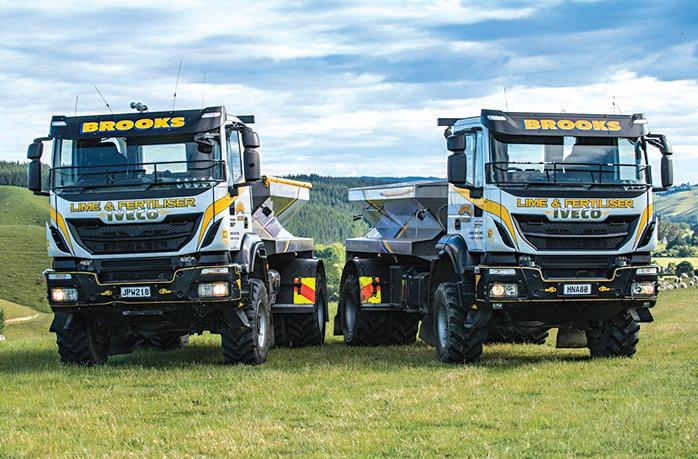







It’s all a bit gloomy really, daylight savings has finished, lambs

and logs are worth bugger all, the media has lost its social license, and the economy is in the cart. No matter who you talk to in the primary and wider sectors, most are facing some significant headwinds in terms of rising costs and reducing sales prices. The days of discussions around the water cooler about what size engine you are putting on your new boat have been replaced by bemoaning about having to sell the boat to recap-
italize your business. These discussions are probably no surprise as good old uncle Adrian Orr has allowed inflation to run away over the post covid era and the countries that we supply our wonderful commodities to (primarily China) have had inflation rates that barely register. This means our costs are higher and our customers don’t have the ability to pay more, which all adds up to margin squeeze and, as primary producers, we are the ones facing the squeeziest of it.
The state of the China property market is old news now but still incredibly important to our industry. Current Chinese housing starts are back at post GFC 2008 levels which is down 61% from the peak level in 2021. There is a big discrepancy between starts and ‘under construction’ figures which are only down 11% over the same period, something that Goldman Sachs has labelled the


‘completions cliff’. This is explained by the time lag between kicking a project off and completion and does indicate that, once the current builds are finished, the Chinese construction industry will look vastly different. The sentiment of this is playing out in the Iron ore futures markets with a slide that would make Tesla shares look good. What has manifested with global log trade is the reduction in non-NZ log supply into China with Europe and North America significantly reducing deliveries. NZ now has a much larger share of the softwood pie, which is great, but the problem is the pie is now the size of a savory so to keep things in balance we must keep a lid on the amount of mince and cheese we try to shovel into the savory.
April export prices are down around $20/m3 from March at approximately $105/m3 and, although not as bad as some have expected, it’s still low enough to see many harvest crews parked up and many of those that are
still operating being slowed to minimize the pain.
Fixed term export prices and other averaging based price structures have enabled many forest owners to keep the gates open and this method of pricing is becoming more popular every time we have a price ‘correction’. Domestic sawlog markets continue to tick over and while not breaking any records, they are continuing to hold price and volume while carbon prices fell off the chair following the govt NZU auction in March and following a bit of a rebound have dipped in recent days to $55/NZU.
In summary, April is bad, not as bad as we thought it would be but that’s cold comfort if you’re a forest owner or out-ofwork contractor. The market will bounce, as it always does, but this time it may be reminiscent of a half flat Swiss ball, it’ll still bounce but not as high as we would like and will depend on supply levels from NZ. On a positive note, at least we don’t deal in iron ore…
update

The graph below was kindly made for Top South Farming Monthly by OnefortyOne. It shows what parts of the tree are commonly used to make what products for domestic and export markets. We took to the street to find out what people think the wood from our local pine trees is used for.
Sam Marr

“Exported to China and turned into construction timber and other wood products like chipboard. Domestically it’s sent to local mills to be used for a range of thigs like construction timber and in agriculture.”
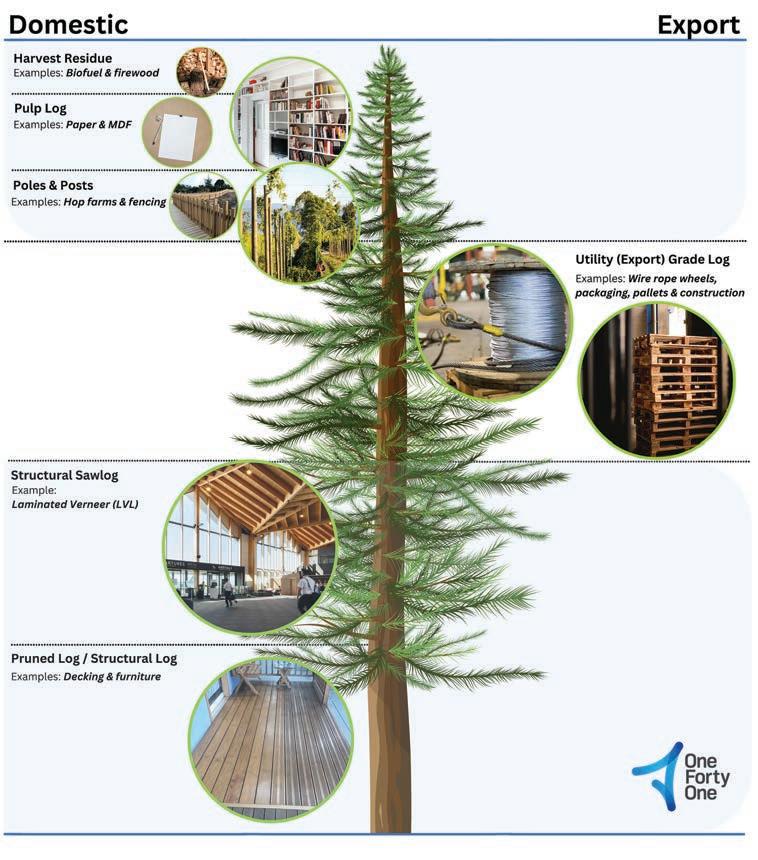
Chris Gordon
“Turned into pulp, paper, MDF and carboard.”

Robbie Robinson
“Exported to China and turned into posts.”


PF Olsen is the leading provider of independent professional forestry services in New Zealand. Contact us now for all your forest management needs:
PFOlsenistheleadingproviderofindependent professionalforestryservicesinNewZealand.
PFOlsenistheleadingproviderofindependent
Contactusnowforallyourforestmanagementneeds:
• Carbon accounting and advice
•Harvestmanagementandlogmarketing •Forestestablishmentandtending •Forestvaluations
• Harvest management and log marketing
• Forest establishment and tending
• Forest valuations
•Duediligenceonforestpurchases/sales
• Due diligence on forest purchases/sales

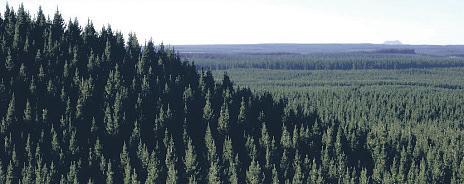
Nelson 035440066


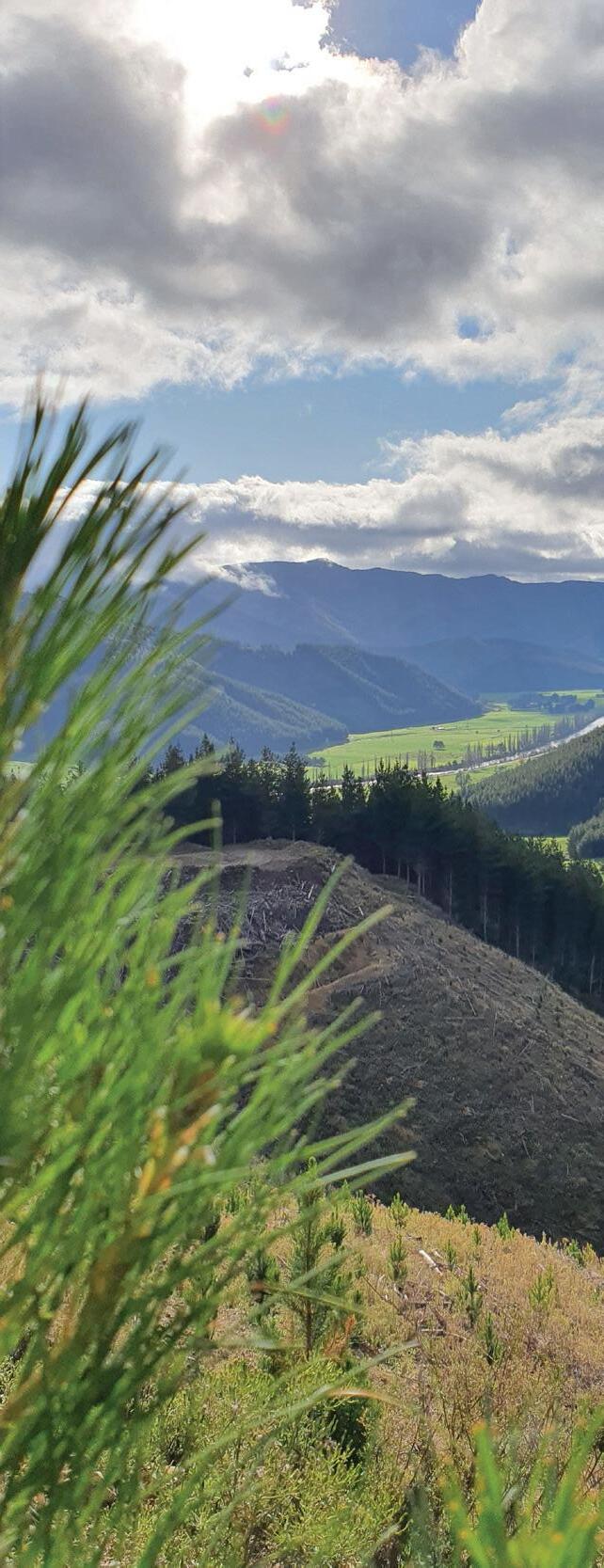

With 25 years experience in the industry the Tasman Forest Management (TFM) team offer services in:
• Forest and woodlot harvesting
• Domestic and Export Log Purchase
• Forest Establishment
• Emissions Trading Scheme advise and management
• Forest Valuation
• TFM are part of the Forest Management Group with offices throughout the South Island, Hawkes Bay and Southern North Island
TONY ORMAN
The savage impact of weaker demand and ample supply has seen Chinese domestic prices for New Zealand logs plummet, with Chinese buyers withholding orders while waiting for prices to hit rock bottom in a ‘massively concerning’ situation for local loggers.
That is the assessment of Marlborough Federated Farmers forestry section chairman, Chris Dawkins, who says the effects of the Chinese market have been profound.
He told a recent Marlborough Federated Farmers meeting, that “very much against expectations and hopes, the China market has again plummeted.
“Indeed, the current correction might best be described as catastrophic, even by our recent history,” he said.
He said here was an assumption all would be fine after the Chinese New Year. It was expected daily log consumption would quickly recover to normal levels as everyone went back to work. “Unfortunately, this has not happened.”
With demand weak and ample supply, Chinese domestic prices for Kiwi logs are falling. Chinese buyers are now refusing orders from Kiwi exporters, as they wait for prices to hit rock bottom.
“ This is a massively concerning situation and around New Zealand, there is the beginnings of a big slowdown in deliveries to ports. Underpinning that is harvesting contractors and transport companies being parked up again,” Chris said.
However, a bright note has been high levels of enquiry from India with buyers wanting to look again at New
Zealand log cargos. But he advised caution.
“Whilst India stands as a nation of great opportunity, our history is scarred with many bad and problematic deals with a lot of Kiwi’s losing a lot of money on Indian sales.
“Payment defaults have been common. For most exporters, there can be no India deals, or at least no logs loaded on boats, until the money is in the bank and that has become a major impediment to significant trade resumption,” he said.
Meanwhile, New Zealand sawmill owners are experiencing reasonable sales levels with most citing a good order book with prices for domestic logs holding.
“Once again, the local sawmills confirm their position as the backbone of the forestry sector,” Chris Dawkins concludes.


•
•
•
•

Hokitika’s Siobhan O’Malley is a dairy farmer, innovator, businesswoman and community volunteer. A great example of the thousands of Kiwi dairy farming women throughout New Zealand who multi-task every day to contribute positively to their communities.
For Siobhan, there’s never a dull day – she’s also a high school teacher, president of her children’s gymnastics club, small business owner and her family enjoy being involved in sustainability initiatives.
Siobhan and fellow dairy farmer Wayne Langford co-founded the Meat the Need charity, which helps feed Kiwis in need, so they don’t go hungry. Farmers throughout the country donate meat and milk, which the charity provides to foodbanks and other community groups dealing with food poverty in NZ.
“Meat the Need is hugely successful. We’ve achieved more in three years than we thought we would in 10 years because farmers really got behind it,” Siobhan says.
“I get involved in my community in the things that I believe are really important and that I’m passionate about. By working together in our communities, we achieve so much more.”
Siobhan didn’t always live on a dairy farm. She grew up in Christchurch and graduated

with a master’s degree in classical studies. She met husband Christopher when he was a tour guide in the Abel Tasman and later in Dublin, Ireland. They went dairy farming together after Christopher worked for his brother, who was sharemilking, and fell in love with it.
The couple own their own farm in Hokitika and enjoy teaching their children about farming and the environment. They plant native trees on their property, which give native birds places to rest and feed.
“With farming, I love being the master of my own destiny and the whole family is in-
volved. Our children Finnian (12), Aisling (10) and Ruairi (7), know more about running a business than I did at 18,” Siobhan says.
On the business side, Siobhan and two other farmer friends she met at the Kellogg Rural Leadership course have created luxury knitwear company, Hemprino – an e-commerce start-up.
Hemprino is made from hemp fibre and merino wool. “The hemp fibre strengthens the merino, and the knitwear is soft. It’s biodegradable which is important to us – we believe everyone should be reducing their environmental footprint where they can,” Siobhan says.

Suppliers of all grades of industrial and household coal
• West Coast sub-bituminous coal with low ash, low sulphur and clean burning qualities
• High grade West Coast bituminous low ash coal
• Premium grades available for your boiler or multi fuel burner
• Bagged coal from 20kg to 1 tonne
• Bulk deliveries
• Coal storage in the Canterbury region for continuity of supply
a call on 027 531 0998 for a competitive price to have your coal delivered direct from our mines to your place.
Phone 0800

Exploring the untamed beauty of the West Coast, the West Coast Young Farmers Club recently embarked on a thrilling 4x4 fundraising trip that left participants amazed and exhilarated. Led by the passionate events manager, Anthony Laughton, the club’s decision to enhance its social activities has proven to be a resounding success, bringing members closer together and showcasing the diverse mix of individuals that make up this vibrant farming community, while raising funds for exciting ventures ahead.
“We had around 27 vehicles take part with close to 60 people including kids on each day,” West Coast Young Farmers Club events manager Anthony Laughton says.
“On the first day we explored the tunnels of Napoleon Hill and the historic gold mining tunnels. The following day we went down ‘No Name Road’ which is a typical 4 x 4 bush track, which was a little overgrown and scratchy but had some great off-
road mud holes to play in for those who wanted to,” Anthony explains. Anthony says a highlight for him, and other members, was a group of seniors with classic four-wheel drives who joined in on both days.
“They had such a good time and we just enjoyed having them it brought something special and different we all enjoyed it,” Anthony adds. The funds raised were put towards the cost of accessing the tracks and the small amount left over is going towards the July farmers ball that the group is hosting. “The ball will be for any age and any farmers, growers, supporters of the ag industry or our club,” Anthony says.
The West Coast Young Farmers Club has over 20 regular members, with an additional 10 people that join in here and there. The club is a great place to meet people in the community, make industry contacts and grow your knowledge of the food and fibre sector. If you are aged 16-31 and would like to connect, please message the club directly via their Facebook page ‘West Coast Young Farmers Club.’

For over 40 years Nicholson Protective Coatings have supplied abrasive blasting, water jetting and industrial painting services to a myriad of industries New Zealand wide. The largest protective coatings applicator in the top of the South Island, NPC supplies maintenance contracts to many of New Zealand’s largest companies, applying protective coatings to ships, bridges, bulk fuel storage tanks, lighthouses and large scale civil engineering projects nationwide. Based in Nelson with a staff of 40 plus and a wide range of fixed and mobile water and abrasive blasting equipment no project is too big or small for their capabilities.
NPC has a lengthy history of working in the dairy sector, ensuring that milking sheds, yards and sheds are maintained to the high standards expected in today’s primary production environment. Using water blasting equipment ranging in capacity from 3000PSI to 40,000PSI NPC can remove unsound/ flaking paint quickly and efficiently, leaving high animal traffic and chemically cleaned surfaces clean and ready for new paint. Our experienced staff can then apply the appropriate Carboline products to bare block, concrete and metal surfaces using various application methods. Coating these structures ensures the maximum lifespan for your investment, as well as improving cleaning and hygiene requirements.
If you want advice as to what can be done to protect your infrastructure in a timely and cost effective manner then Nicholson Protective Coatings would love to hear from you. To discuss your project with one of our experienced staff simply call us on 03 547 7407 or email us at admin@nicholsons.co.nz


Marlborough winemakers are delighted that Vintage 2024 has produced great flavours and disease-free crops. This despite an approximate reduction of 25per cent in yield coupled with lower prices averaging about $2000/ tonne over the district, according to PGG’s National Winery Account Manager Blair McLean.
Overall tonnage per hectare averaged 12 to 13 tonnes with higher yields on younger vines in the Wairau and lower tonnages in the Awatere Valley. On the plus side fewer sprays were required due to the lack of botrytis and the natural ripeness of the fruit.
Blair says word of the smaller vintage has spread overseas, and orders are flooding in, with im-
porters wishing to secure supply, resulting in a lift in bulk wine prices. Wine leftover from the 2023 record harvest will provide wineries with the opportunity to produce some exciting blends from the current season.
Water supplies held on during the dry with one grower reporting that the Southern Valleys scheme closed off the day after harvest.
Some vineyards did run out of water and had to tanker in supplies, and many of the irrigation dams have been drained. It is to be hoped that aquifers and dams will be replenished during winter rains.
Many older vines are now being replaced as they suc-

• GRASS HARVESTING • BALEAGE
• HAY • PIT SILAGE
• GROUND WORK • SPRAYING
• AIR SEEDER DIRECT DRILLING
• MAIZE PLANTING & HARVESTING
• EARTHWORKS • CARTAGE
• SITE WORKS • DRAINAGE
Paul 027 422 5893 Phil 027 372 9864 accounts@lesliecontracting.co.nz

cumb to trunk disease with some owners opting to re-trunk by training a cane from the base of the old trunk. Blair has noticed a reduction in development due to high interest rates and reduced income, with many growers holding back for brighter times. There is a move away from CCA grape
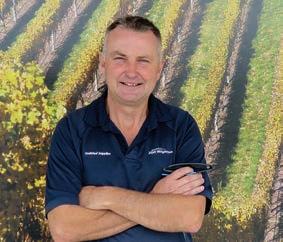
posts with a new process using micronized copper azole which will allow broken posts to be disposed of by burning, but they provide similar preservative qualities. Steel prices have come down recently resulting in NZ steel posts becoming an effective and competitive option for trellising.
In Australia the wine industry is not in as positive a condition as here in NZ. Many red varieties are being pulled out as a result of the cancelled orders from China due to the recent political spat. Blair points out that shelf space will have quickly been reallocated to wines from Chile and South Africa so markets will be difficult to re-establish for the Aussies. In addition, China is making great strides in the development of their own domestic vineyards further reducing export opportunities.
It’s crucial that dairy farmers don’t deplete their winter and spring feed reserves, Hamish Morrison the dairy section chairman of Marlborough Federated Farmers warned recently.
“Don’t eat into winter and spring feed or this will have flow-on effects for next season as well,” he advised at a meeting of Marlborough Federated Farmers.
He said most dairy farmers are currently starting to plan for the next season which means drying off lighter cows and getting culls away. The worry for many is where their cows are going to go for winter grazing to get decent feed.
With the serious drought conditions in southern Marlborough, where a lot of dairy farmers would normally send their cows, they are now hav-
ing to make other arrangements or winter more cows on the milking platform, which will come with extra feed costs in a tight financial year. It was another dry month with only about 30mm of rain recorded for March in the Rai Valley area. The majority of this was at the start of the month before farmers had got grass seed in the ground, therefore, new grass paddocks are only just beginning to germinate. Many farmers have yet to put on Autumn fertiliser for fear that it won’t get washed in before needing to be grazed again.
Drought Deficit
Meat and Wool, Section chair Cath Baker painted a similar picture of domination by drought. The drought is stretching into autumn as predicted, with a couple of light frosts already occurring and the window of
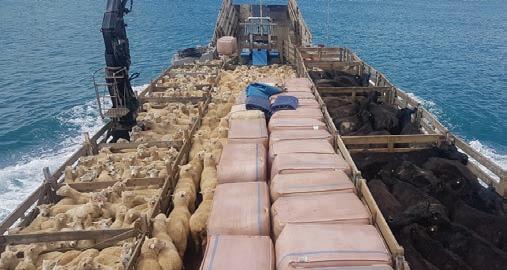
We can deliver or collect just about anything, including building supplies, gravel, fertilizer & stock. We also look after swing moorings.
opportunity for autumn growth is diminishing rapidly.
The water balance for the 2023/24 season is tracking around the same deficit as the 2000/01 droughts. The deficit is approximately 120mm less than the LTA (Long Term Average).
Cath Baker welcomed the visit of cabinet ministers Todd McClay (Agriculture) and Mark Patterson (Rural communities) and the government declaration of a medium scale adverse event.
She said it was heartening to see green-fed crops and autumn-sown pastures on dry-land farms. Summer fallow is such an important tool for Marlborough farmers to ensure the soil moisture is still there at sowing. While it is a large opportunity cost to spray out paddocks and shut them up until drilling, the establishment results make it very worthwhile.
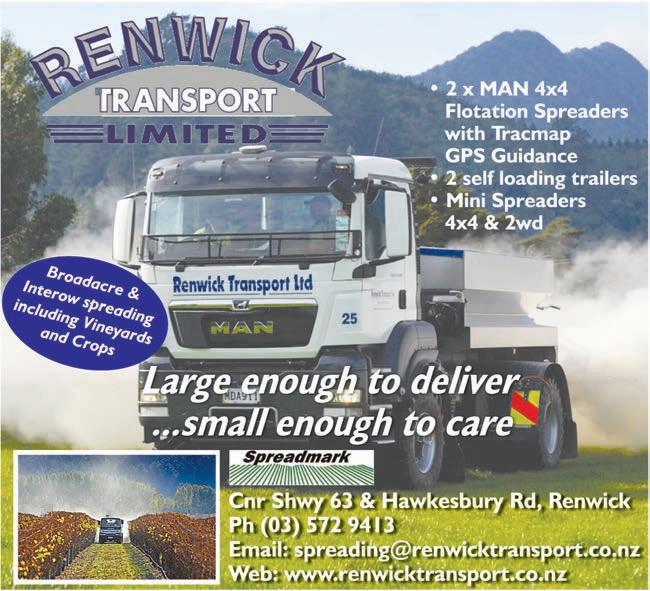

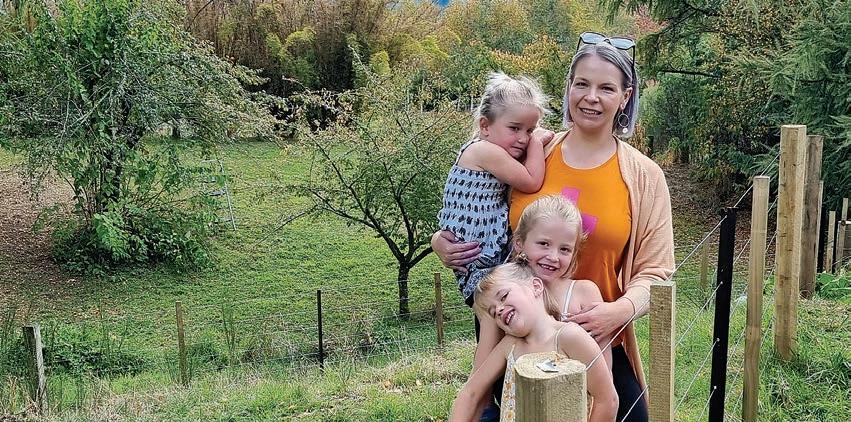
A Murchison dairy farmer’s wife’s life took a rewarding turn when she stumbled upon the Rural Women group.
From being a tentative newcomer, Alana Clayton is now a fervent advocate calling for other Murchison women to come and be part of shaping lives and driving positive change.
Two years ago, Alana discovered Rural Women and has since become one of Rural Women Murchison’s strong supporters and advocates.
“I didn’t know much about Rural Women when I started coming along,” Alana says. “But it’s a great opportunity to get out and meet new faces and socialise with people you don’t normally meet up with.”
The group has around 15 members and in the past 12 months they have been offering their services as caterers with the
funds they receive going to local charities or events.
“When we do a catering job, the money we receive goes towards something specific,” Alana says.
“Recently we donated baking to the school, helped some Murchison kids attend the Spirit of Adventure, as well as helped a Murchison girl at Nelson College for Girls attend a netball tournament.”
Alana says that Rural Women groups all over the Top of the South have recently come together to discuss how they can influence change regarding the extensive time frame young ones are facing to sit their driver’s license tests.
“Due to the demand and hardships out there, Rural Women are looking at getting a driving license instructor to come into the area, this would save so many families travel time and costs.”
Alana and her family have
some changes on the horizon and will soon move to Little Wanganui.
“It will be really sad to leave,” Alana says. “But the first thing I will be doing when we get there is connecting with their Rural Women branch. That’s one of the cool things about Rural Women, is there is a group almost everywhere.”
Alana says that, for her, some of the other benefits of Rural Women has been supporting the older generation who are involved and having an opportunity to take part in shaping some of the future for her own three daughters. She would like to see more Murchison women get involved in the group.
“I’ve enjoyed the social side of Rural Women, other ladies would love it too, so come and meet us. It’s a great bunch of ladies and if other people can come and give a few hours of their time each month then surely we can all do the same.”

Recently we partnered with Top of the South Rural Support Trust, ANZ, PGG, ANZCO and Rural Women to host a drought shout. The event was well received and oddly just as the event began the rain poured down which while ironic was welcomed. Regardless of the recent rain the drought has been significant in parts of Tasman, and it was a welcomed break to get off farm and come together to discuss how the drought was impacting us and to be made aware of drought support available. Thank you to all those who came and made this a neat night.
Nelson Federated Farmers covers a large area. All of Nelson out to Rai Valley, Richmond, Hope, Tapawera and through Murchison to Mauria, then all the way over to Riwaka and
Motueka, including all of Appleby and the Waimea plains, to the foot of the Tākaka hill. We have been an independent rural advocacy voice for Nelson/Tasman farmers and growers for 187 years. Our aim is to add value to the business of our farming member, encourage sustainability through good management practice and be a rural voice to local council and government. Regardless of if you are a member or not the amazing work Federated Farmers do has a positive impact on all local famers and growers. We are excited to be having our 187th AGM and invite you along to hear an update on what both the Nelson and National teams have been working on.
AGM details: Wednesday 15th May / Club Waimea in Richmond / 1pm / Free to attend and we will shout afternoon tea but for catering numbers please RSVP to nelosnfedfarm@gmail.com


Kenepuru Farm
For Sale By Negotiation
69 Titirangi Road, Kenepuru Sound, Marlborough
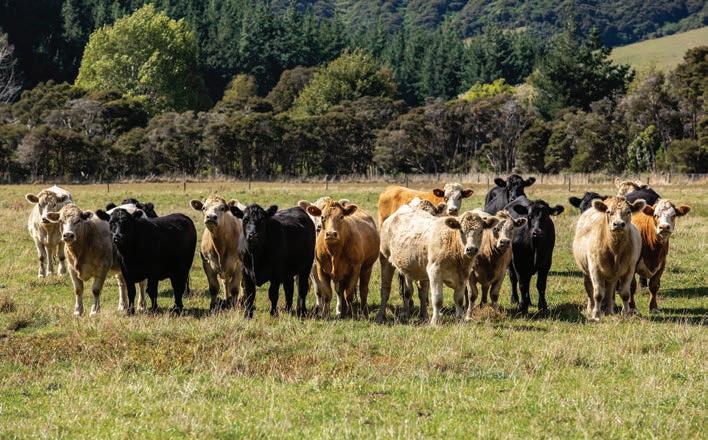
288ha held in three titles located at the head of Marlborough’s Kenepuru Sound, 60km drive from Havelock township. A seldom available opportunity to acquire a large parcel of flat land in the Marlborough Sounds with approx 75% workable by tractor. Currently utilised as a sheep and beef breeding/finishing unit with the added benefit of 100ha deer fenced. The intensive property has an annual fertiliser and regrassing history supported by a historical 1800mm rainfall. The large workable area allows for a variety of brassica and high performing grass species to be grown. Five-bedroom residence with swimming pool plus additional three one-bedroom cabins and ablution block. There is also a separate two-bedroom standalone cottage across the road from the main dwelling that is rented out for short term accommodation. The property is supported by numerous sheds and outbuildings, sheep and cattle yards, four stand RB woolshed, deer handling facilities plus the added benefit of a 450m flat airstrip with fertiliser bin. Close proximity to Punga Lodge and Portage Resort and the internationally recognised Queen Charlotte walking track offering potential income generation. School bus pick up at front gate with Waitaria Bay School a 25 minute commute.
A seldom available opportunity in a peaceful picturesque environment offering both farming and many outdoor recreation benefits.
colliers.co.nz/p-NZL67028288

For Sale
$2,300,000 + GST (if any)
7797 State Highway 1, Ward, Marlborough
115.99 hectares (freehold). Located 50km south of Blenheim via State Highway 1 on Marlborough’s desirable Flaxbourne/East Coast region. Close proximity to diving, fishing, spear fishing and long walks on the beach. Currently utilised as sheep and beef finishing, dairy support, vineyard. Added benefit of an 8.8ha Sauvignon Blanc vineyard, vineyard irrigation consent, storage dam and land for further vineyard development if so desired. Rolling contour with good balance of flats and workable downs, fenced into 14 paddocks. Three bedroom dwelling (extensive renovations 2018), two stand woolshed (300 N/P), sheep and cattle yards plus numerous sheds and outbuildings. The new Whale Trail Cycleway is set to pass through part of the property allowing for a potential supplementary income opportunity.
colliers.co.nz/p-NZL67028086

“Brooklands”
2643 State Highway 63, Wairau Valley, Marlborough
A rare opportunity to secure a 43ha parcel of flat land with a multitude of uses. Fenced into 12 paddocks with reticulated water, currently running sheep and cattle with the ability to significantly intensify the farming operation on the productive Temuka and Hororata Loam soils. Historical 880mm annual rainfall.
Adjoining the Wairau Valley township amongst a vibrant rural community within a comfortable commute to Blenheim CBD. Four bedroom residence in a private setting, supported by numerous sheds and outbuildings including woolshed and yards. Stands of mature Oak, Macrocarpa and Redwood trees provide an aesthetic rural setting.
A must view property if you are upsizing, downsizing or just wanting to secure a piece of the
farming lifestyle with income and significant upside.









The Rural Noticeboard is for local not-for-profit community groups and organisations to advertise community events or projects that will be of interest to our 35,000 rural readers over the top of the south. Thanks to the team at O2B Healthy for making this noticeboard possible. If you have an up- and-coming project or event that you wish to place on this noticeboard, please contact eloise@topsouthmedia.co.nz


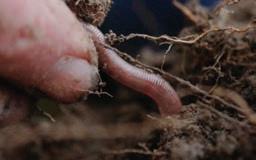
Explore soil health by visual assessment, learn soil basics, and much more Join us as our farmer hosts allow us to dig in and ‘trouble shoot’ their soils.
• What is a functional soil?
• Plant/pasture diversity
• Soil biostimulants and fertilisers
– why are they different?
Kaituna Workshop Monday, 6 May 2024

10am-2pm, 76 Readers Road
Hosts Fred and Nikita Gane, Beef and sheep farm
• Introduction to soil carbon
• Understanding soil and herbage testing
Rai Valley Workshop Tuesday, 7 May 2024

10am-2pm, Bryants Road Host Geoff Shearer, Dairy run-off farm
Morning tea and lunch is provided for this free workshop. Register by emailing wendy.sullivan@landcare.org.nz
Speakers include Marlborough District Council Soil Scientist Matt Oliver and Nick Collins. Nick is a dairy and dry stock farmer, as well as a consultant for Agrisea, who is passionate about functional soil and enhancing pasture diversity. Thank you to our host farms Without them these events would not be possible!



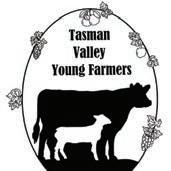
The Tasman Valley Young Farmers Club invites you to mix and meet at the Brightwater Bar and Bistro.
Tasman Valley Young Farmers is a place to meet new people, connect with rural communities, and have some fun.
‘If you are aged 16-31 and are working, or interested in, farming, agriculture, horticulture or viticulture then we would love to meet you.’
Brightwater Bar and Bistro / Wednesday 8th May @7.30pm or send them a message on Facebook

Reefton Wool Day 2024

Reefton Workingmens Club, 55 Bridge St, Reefton
Tuesday 21 May 2024 10:00am – 3:00pm
Join us to hear how our speakers have come to be part of our community, their journey as a crafter or a journey that they have taken because of their love of yarn. Shop in our merchant’s mall and take part in our raffles (bring cash). Bring an item tagged with your name for the show and tell display.
$5 entry fee includes tea and coffee, morning tea and covers the venue hire. Bring a plate for a shared lunch. Visitors can shop in the merchant’s mall and view the show and tell displays for free!

Picton Library and Service Centre, 2 Dublin St, Picton Wed 22 May 2024, 10:00am–12:00pm
Marlborough District Council’s Soundsbased councillors Barbara Faulls, Raylene Innes and Ben Minehan, along with Māori Ward councillor Allanah Burgess are available for a drop-in chat each month. Come along to the Waitohi Whare Mātauranga - Picton Library and Service Centre where the councillors will be onhand to provide advice and information and help with Council-related issues.














